n a cool Sqncmhc• C\cning la\t }Car .,e,cn perfect!} groomed dog-.. n.:prc�en11ng the <hlferent group� of ,\KC recognit�:d breed". made a final trip around the ring before thqudge pointed to the \\toner, a red bnndk Afghan hound. Similar \Ccne:- are !ICcn \�cckend after ''e�kend at the more than I.000 dog ..how' hdd annually in the nation. To the ob�ervc1 thi' wa!l ju�t anothe1· hc!�t in shO\\ \\in. But un!..nown to th..: -.pectator-•• then: \\as 'umcthing -.pedal atwut thi' v.in and the do�. Ch. Jamtca\ Sc,·nct or Jehcran Th� dog "a' ballltng a deadI} dt:-cu.,c �;:c�aad������,��,,�c�l��i����a���i�:nc.
Just l'-"O month., earlier Chuc!... a the dog i� ecilled b} hi-. 0\\ncr. Jo} Mauro-
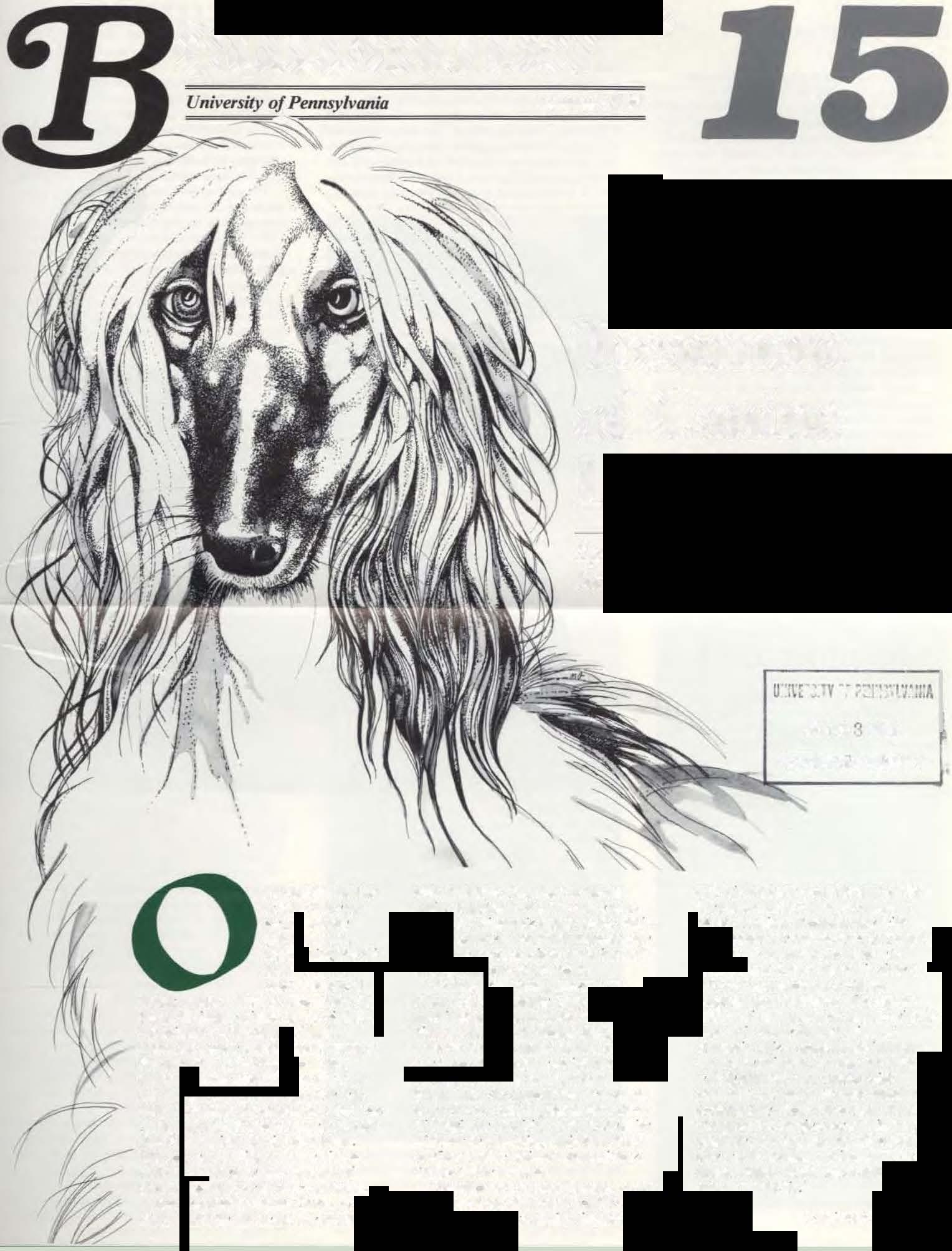
Summer 1985
Treatment of Canine Lymphoma
Lymphoma is a most common tumor in the oncology clinichere.
JUL�r. 1985
VETERINA�,y LltJfiARY
lkhr. had been diagno'ied "" hm·ing camne lymphoma. l\ot tuo man} year' ago 'uch a d1agno.,.-. meant death ''ithtn a fe" \\Ccb: now chc:moimmunolherap) can bring the: c:ancer tnto remis-.ton and the dog\ life can be extended.
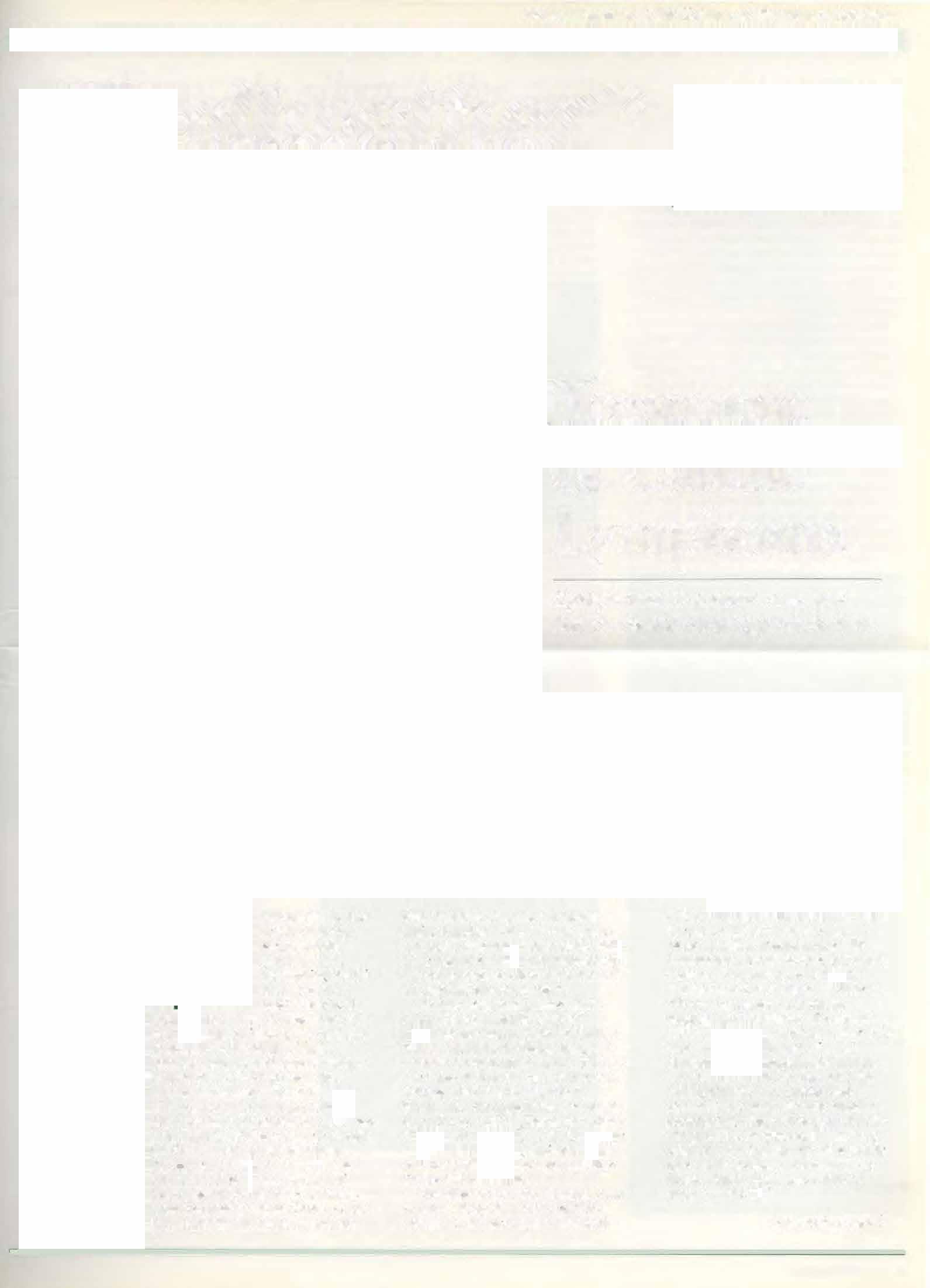
�In July. \\hile being �h(l\\n in the group. Chuck sudden!} gagged." explatnc:d Jo� Mauro-Bchr. �1 checked hun, he 'c:em<.'<.l o.k. though the lymph node-. in the neck could be kit. The ne\1 dtt) I toot... him to the \ctcnnarian and -.he .,u.,pcctcd that he might ha\e I)mphoma." An appointment \\U� mudc to �cc Or. K. Ann Jcglum at the School ot VctCItnar)' v1cdtcme of the Uni\Cf\ll) of Pcnn...yhania. D•agno-.uc te,ts there conltrmcd the \etennarian\ -.u.,ptcion.,. Chuck had l)mphoma.
"Lymphoma i:. a mo't common tumor in the oncology clinic here."'>aid Dr. Jcglum. "It i!. mo't rcadtly dtagno�cd
and it •� the mo:-t trt:atabk cam:ct. \\� lune dc,cloped a treatment program \\hich combmc-. chcmothct.tfl) \\tth immunotherap) and \\c ha\e had good !>Ucce:.s." A treatment protocol \\a' initiated and Chuck began ht!l \l'>it., h) VHUP. "l.)mphoma i:. a raridly progn:�'ing fatal di!>casc." Dr. Jeglum 'laid. "Lclt untn:atcd. the .!!limaI \\til die four to ''x \\eck-. from the umc ol diagnOM'>. It " a 'Y'temically tmmuno-.uppre..,)>i\c dJ:-ea:-.c." In the fl<J!>t dog-. \\ith l)mphoma \\ere trcatcu wtth chemotherary and their live., could he rrolongcd b) about �ix to eight month:-. ..Dog� had to he gl\cn c}totn\.tC drug"> regular!)... Dr. Jcglum �aid.. [,cntuall) Lhc) \\OUid dc\'clop a re-.J.,lancc 10 the drug'l. relap<,c \\Ould occur anti the animal \\OUid dtt.: •·
Commtwclon11(1�1':!
NewsmagazineoftheSchoolofVeterinaryMedicine ellwether---
Treatmentof CanineLymphoma (
tlllflllltt'd/rompu�c I
Th� protocol cmplo�ed b) Dr. Jeglum u�n chcmothcrap} to bring on renmllion of the lymphoma. ·'Bt>lore tteatmg ''ith the \nccine \\e have to reduce the tumor burden." 'he ....atd. ''The antmal hu�.; to be in rcmt-.,ton belore thc \acctne can \\or�." When rcmt-.,iun t� achtc\ed. the dog b treated ''ith a vncctne to �timulate the immune !>Y!)tcm liO the bod} ''til fight the t.h caloe. ··we produce the \accine tu�rc," llhe aid. "ll i� prepared from tumor tili�Uc ta"cn from the animal and it i!'> spcctfic for cm:h patient. We prepare u quanttl} and store it lro7en."
UChuck recetvcd lour chemothcrap) tr catmenl'>."c,platnt:d Mr'l. M•wro-Behr. ··He had no lltdc ctfech from the drugs. ate li�c a hor'e and \\a'> acti\c and eager and dtd well at the shO\\s.� After thc.,c treatment., the dog V.Ull in remiM.ion and a bt-monthl} \acctnnuon program ''� begun. lie rcccl\ed the \accinc thmugh March uf thi.; year ''hen ht' I)mph node' agam incr ca:-.ed in 'i1e. Another cycle of chemotherap) ''a' admirw.tercd. rhe di,ca'e \\ent into rl.!mi-.!>ion and thc dng '" nu\\ hue� on th� \acctnc !'>Chedule...He i-. in excdlcm condition."...ard Mrll. Mauro-Bebr. "We run three milo. \\ith him C\er� da). and then he romp-. in the litrgc paddock \\llh our other do�. fits haircoat b good and lw, spml is excellent. I h: uoe<, ptnc \\hen \\C go to a llhO\\
Bellwether No. 15 Summer 1985
Bellwrthn- i� published b1• tire Schoof oj terinur Mt•didnt• ut the Unil•ersil\' u{Pt>nm)'l\·ama, in cooperation with the Uni\'ef)itycif Pemls}lwmia q({ice of'Uni,•enity R£•1atium.
Editor:
Helma wt•eh
A.nistant Editor:
John £ *J,farun.
J�M.D.
Writerj·:
Hdma H'eeks
Dr. M. Jmephine
DC'uhlt•r
(Animal CrucAers)
Designer:
Roh Jan�st'n
Illustrator:
?•rlarit: Garq_/{mu
Photographers:
Amhony Wood
l.ynnl' R. Klunder
New Bolton Liaison: Catherine LArmore
Distribution:
June Johns
We'dlike to hear )'our pratse. criti(1.\ntS. or t•omments. Plt•ase addres!i your corre.'>pondence to: H�lma WHks, Uni,•er�iry of Penn�J'I,·ania. Sc·hool of Ve1E•rinc1ry Aledicine. 3800 Spntce Street. Philadelphia. PA 19104 or LindaFischer, University of Pennsylvania 0./TlCe of University Relations. 410 Logan Jla/1. Philadelphia. PA /9104
(215) 898-3451
None of these article.\ are fCJ he reprodwed in anyform witlwut Lire permission ofrheeditors of Bellwether.
/985 Copynght by the TrusteeJ of tht• Universtty of Pennsylvania
''ithout him. I ht'> dog iu't I0\1.'' the -.hem nng and th� excttcm�nt and \\c ma) 'ho\\ htm rrom time to ttme ·•

A recent '>tUd) conducted her�· at the School clo,el) examtned lhe tleatment of canin�.o I)mphoma "ith chemoimmunothcrap�. The \\ork \\a!> !>Uppnned b) lund' from the •\mcrican Kennel Club "\.\c \tudtcd JO dng' with eonllrmed l)mphom.t:· 'ato Dr. Jeglum fhl.! dog' repre..ented a \ariel) ol breed-.. a number \\1!1\! rni\ed bree1h. The age range \\J'I lr1.)m three to 14 )t'ar,. the med1an age \\tt'> 7.5 )car' Then: \\ere 15 maiL-s and 15 femaks 1n th� '>lUd). 01 the male., lour \\CI"C Calltrated and of the kmale-. nine \\t:I'C !>pa)cd.
A compll:tc metfical wm J...-ur wm. uone lor each antmal and the extent ot the oi...ea'e \\as recorded using the World llcalth Orguntlatton cltntC<tl .,taging 'Y'tem for tumor' 111 uome-.uc ammah. A I�mph node ww.. n:mo\cd tor hi-.topatholog� and lor \accinc prcpuratiun.
Tht> dog' rc\:ci\ccl t"n cvck-. ol combmation chcmothcrop�... xud Dr. Jeglum . Each c�cle
\\Ccb. \\'lulc in rcmi...,ton the dog-. a-cce1\ed vaccine bo�hh e\cr� lour to ''' \\ccb. IJ a n:lap'c occu1re-d... luur \\1.:\-k C)clC ol chcmotherap) ''a..' giH·n \ pun n::mt,,tnn the v�tccine protocol ''a' re..um�.:d.
"\\c 1l1und that "� cnuld U'>c th� chemotherap� C)de' n:pcatcdl) .md that remt�'ton \\UU!d occur." Dr .kglum �aid.·· I he tmmunotherap) 'ignittcnntl� prulnn�' the rcmi"ion duration and n enables the untmal Ill rc,pnnd to n:pcah:d chcmuthcrap). Drug rc'r'tatK'e rna) be uhcn:d b) th�o' trnmun,Hhctap}
rhe mc.:utan ...ul\t\<il Iale fur the dog-. in the! '>llld) \\<1'> IJ month., \\hu.:h ,., a stgn1ficant incr·ca!'>C.: m-er thc 'lll\iHtl rate of animat.. treated \\tth either chcmnthcrap) or nnmunothentp)
..done Dr. Jeglum point�o·u out that n number ul Jog' from the -.tud) arc '"" ull\e and arc dotng \WIL It \\U., luund that the \accm�. did not ha\e 'tdt t:fkt:h Ur CUll'l' .1 tU\1<.: 1'\:<ICIIOil in the CllllmaJ.... ••Jn the long run th1.· \-accme '' lc" c\pcn,i\c th;m Jrug-. .. 'md Dr. Jcglum.
la:-.ted lour \\cek' wtth a diflcrcnt 'ingle drug gi\en c�tch of the tour v.cc.:�... lh u..mg diiTcrcm drug., the chance., of drug re'>i,tance occurring \\ere mintmi1cd." 1 here "a' a l\\0 to three \\cek re'\t bcmeen the cycle-.. I he lr'l.!atmcnt CHu-.ed rcmt.,!>ion ur the disca�c in all animub. The dog' then n:cei,ed the \accinc Thi'> \accinc wa' made ,pecificall) for each anunullrom II!> O\\n wmor. Other \accinc-. h:.t\C been u�cd to trigger a general immune re:.pon...c: the� do not v.ork a� efficient!) a� the 'PCClfiC \UCCtnC.
Dr. Jcglum IOJCCh the vaccmc uirectl) IntO the l)mphattc '''tern rathct than under the ...t...m. "B) gi\ing tt dtrcctl� into a I) mphauc \c.,,el. the vaccine i' deli\ercd 4Uicl...l} to the lymph node-.:· -.he '>Uid. "The) arc the 'uc' tor generating a po!>iti\t: I'C'>pon'c to tumM .lntigen., and they i!TC important m thc mill<Hton of "}'tern tmmunit):·
The procedure" ''mplt'. fhc animal j, 'edatcd.a ..mall inc!'-10n '' made 111 the loot and Lhc I) mphattc .,e,,cl j, "ol.ltcd. B) mean., of a dye this tiny vc,�el i� dilated <md then the vaccine i-. \IO\\I) ndmint"'tcred. fhe tnc•�•on '' ..titched and the dog. i-. up and around a fc\\ minute� later.
In the \tully three vHccinmion-. were given initially. 1he fir"t two were tnjccted t'Ao week.' apart anu the thtrd one month after the second. The animal-. \\Crc C'\amtncd lor rclap-.c C\cry two
B� cmplo)tng chcrnotmmunotherap) the re,carcher' \\Crc able to obtain a remi!'>"'lcm rate longer than 'ecn ""itb c•thcr chemothcrap) or immunothcrar> alonc. I he) found that animal� recci\mg chcmotmmunmhctap) had a much grcawr mc.:utan 'lll' 1\-::tl rate than pre\10u-.ly "een De Jcglurn and her C<>llcaguc' currentI) are imcsttgatmg imrnunit\ tn cantne I) mphoma The� ft)Und that tlw antttwd} k\cl... again'>l purified I}mphom.t antigl'n� currdatc \\Hh rcspon..c to thcrap)' 1n •ndl\idmtl dog,. \nimal� ''ith the h1ghe!.t ;,sntthud� k·\cl hme the tonge-.t \Uf\'1\al mh:. Tht' \tUd\ j, cuntinwng.
The trcatmcnt olkr, lmpe to the l'llUntle" dng O\�ncr' \\ho l<tt:"' Jo..,ing theu dog' hl l�mphoma each }ettr. A' re.,can:h commuc'>, further ad\c.tn�mcm tn treatment \\ttl no doubt be made.
"We an: grmelul." �auJ Mr, Mauro-Bebr ··chuck ";.tli\e and he lead!> a normal life. The thcmp) dtu not ullcct hts ..hO\\. career. he conunucd to win \\" �nO\� the di-.ea'>c cannot be cured. It wtll<tlway' be therc. bul thc tht'fap) keep' It tn remi..-.wn. l.ct\ hope hi' battle with I)mphnma hu-. .,hmvn dog owner!> that the progno-.1, lot a dog "ith I}'mphoma need not be pl>or. There i' help and a canine companion \\ith lhi'> ui-.ca-.c C'-111 lt\IC llltll1) ll1011ths. C\Cn )CarS. bc.:cau'c ol chcmotmmunothcrapy."

2
Bellwether
I.
Botulism, the silent killer
(ltuh,m. regarded b) man� U\ a form of lood pnt!.Ontng due to 'Poth:d mc-c.1t h ..ecn rdatl\cl� ln.:l.Jucntl� rn e4utnc patll nh ,n C\\ Bllltun ( entc1. -\\c �ce about 50 hotuli'm cu�c� annuall}. mun: than arc -,cen b) un) other \�terinar� tc.1ching hn'>pit al in thl.! countr�. -.tlld Dt Robcrt II. Whitloci-. prok-.!.or of medicine at the CnivcNI\ ul Pcnn�\lvania\ School ol Vctcrrmll') Mcdrcinc .• ,;, alldition \\C imc,ligatc 20 to.\0 alldll1011HI tlUtbtca"'· -.cv..:ral of \\hith arc rderred tn u' b) thc ( ommuntcuhk Dt-.ca-.c Ccnw in •\\lanw hccau-.c the) urc not pcrmtltcd tO WOIk on antm,tf dt'>CU\e\." 1 he number of bulllfl,m otnhrc.tk' i,n·t ,urpn...rng bccau'c thl.! !>pore' of the b.Killu' C/ti\Jrtt/twll/UJtu/irwm are lound tn abnut 20 percent tlf 'otl 'amph:' lrom thc tiddlc '\tl:llltic 'tah:' and Kentud,) I hc'e 'pore' are dom1am m the ,�,.1 but undt:r the nght condition' the) bc�(Ulll vcgctall\� .tnc.l produce a t11:..in 'o potent that a tin) amount cun cau.,e ileath. The tlrgani..m unl) gm"' in ana�robtc condition,. I he tnte...ttnc., ofthe )oung. puncture '1\ound... impropcd} C<lllm:d looJ, and lorage malcnal lncorrccll) t:n.,llcd may prmitlc the right emtronm1.:nt in ''hu:h the ...pore' can hccomc 'egctuti\c anti pwducc to>.tn. l ht: 'pore' thcm'el\c' arc rclatiH·Iy hat mi.:'!> <�ntl c.Jn not produce wxin unJt:.,, the conl11tilll1' a1c cxuctl) correct BoLUii...m �trike' all murnmuk puniculurl� young nne,. II '' 1ll1phcatcd in 'nmt.: ca-.c' nf Sudden lnlanl lkath '-.)ndrurm:. Botuh'm can Ul'\..1\lp o�c;uhe .,, lltgl\lll>n ,,, prdormcd 10.'1.111!'>.

Pcopll: diC <.'.\posed tn the tux1n p11111aril) through tmprnpcrl) canm:J lomh. �\n1mal' come 1nto contact \\lth the- tu\in through '>pmkd '1lagc or l>(lOikd meat. Outuli'm can af,n uccut \\hen a \\ound "contaminated \\tth the !o>flOre.. and heah mer. prm1ding an .JilJCnlhtc emtronment for lhl' organi�m to llnurj,h I he third \hJ) to de\elop the d1sca�e is tn ingc�t tht: 'pun:' \\hich then become \cgetati\c in the irllc,tln.ll trul..'t 11 the nght condition' e'\l,t. lnxin thu' pmduced I!'> ab�orbed imo thL· bull> It I'- thuught that thi' 1� the mo�t li�d) \\a� h� \\hu.:h lo01l' cnntrau the di,ca-.e.
1 he -,tuJ) ol b\ltuli'm ut ?"c'' B,>ltun C�ntcr begun in 19gI \\ht:n 25 hnr�t:!'- at a racctrad. '"ere diagno,cd \\llh the dl�ca�c rhe mortalit) ratc wa' ncarl) 75 percent. "We ohtuim:d ...ume antitoxin la tL' in the cour 'e ollhl.! outbrc<tk from Canada:· cxpl:11ncd Dt Whitlock. "But \W could .. e onl) a 'mall pci'Ct:ntagc ol the an1mar....
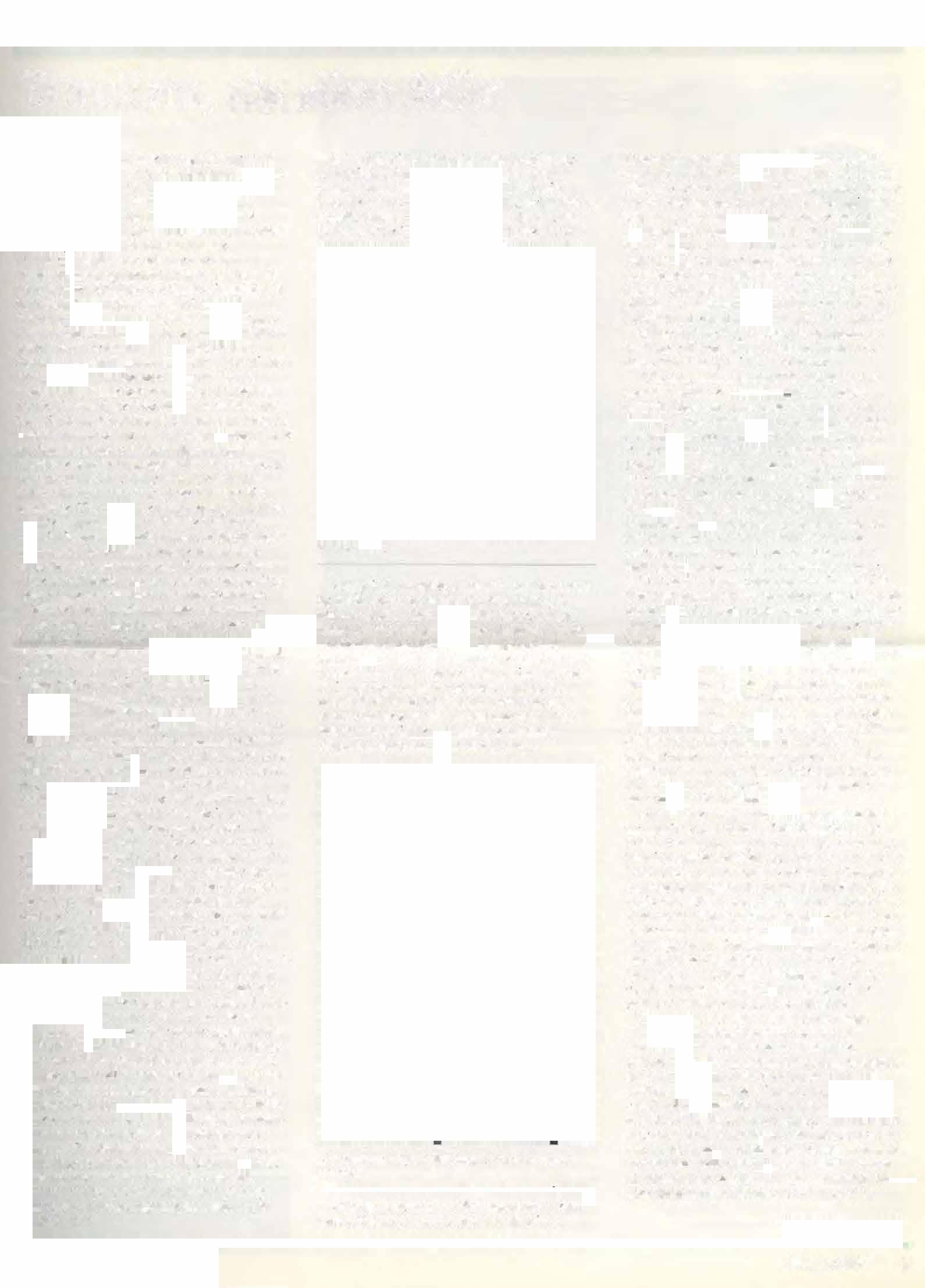
Today the chance� ol unt�al an� hcucr a!, \\C han dc\cloped an antttoxm at l\e\\ Bolton Center. It I� readtl\ ti\,IIIUblc and i, gi\Cil tO the fl3ticnt \\ithtn an hour after udmi''-IOil to the ho,pitaL�
When boluh'm '' ,u,pc.·ctt.d the \etertn.trran or ph) ,ictan cannot order a butter) of te't' to conltrm the dtagnO'>I,, Onl) rarcl) C<.�n the to�m t>e lound in the hloothtream. Th� patient ha' no k\t:r nor \\Ill the blood plctuh: bt: abnormal. A tentati\c diagno''' 1� m:.�dc b) clinical ')mptom... ,mt�. Th.:'c an: mu,cular \\t:JI.nc''· m.tbitit) to '"allm\ normull> und c".crct'c rntolerancc. uch ''gn.. can Cll.,o be.: C:l'iSOCtatcd ''ilh other di,ordcr!> and lC...h rlllht bc ('lerf\>rmed tO rUle OUt other dt...ea'lel>. l he clintcaI 'ign-. ol botull'm progre�!> depending on the <�mount of toxin prc..,cnt tn the body and the UITIOllnt or lllli\CUJar CXCIIIOn. Animal-. und pcopk with rapid!} progn:o.,lling !-igns ha�c a poorer pmgnm,j, than tho�c "'ith grudual on!>Cl.
It h:.tll h�cn lound that the hon.c i!> c'\trcmcl� ,u,cepuble to botuh'm tuxtn. It onl) take.., a mall amount to cau'c ')mptom-. 1he toxm prcn:nh rdcalle and pmductmn nf a�o.:et)lcholtnc. a chemlc<tl tran..mrttcl ol tmpul"c' to the tnu!-.Cicll. Tcnin attache� thdf to motor end plate' and thi� rm:\enh the tran-.mi..-.ton of ncr\c tmrul'c:� and llacid po.mtl}-.i' rc..ulb (mm.clt: \\Caknc��).
Clmmdumhultduwm tnfcctwn. Ihe organi�m cau).ing the di,ea!>t' ''�'' t� pc a.1here are l>C\eral different to.xtn types: lor e'amplc in Europe hor!>es are aflc(;ted by type C bmulinurn. Tht: antitoxin" a gammagl<1bulin dcfl\cll lrom hor..c.�' ''ith a high antthod) titer aga1n�t hntuli�m. Thc...,c horl>e are rnJectc:l.l "ith a 11):\\)I<J. tl>\tn rendered harmh.:,�. Repeated injection� of toxoid �timulatc untibod� production o'<er a pcrioll ol month-.. 1hen the animal "challenged \\ilh the toxin. thil> result" in still higher number-. of antibodtcs \\hich then arc remmcd and :.torcd lor u'e in affected animals
..Stncc \ C ha\c been gl\'tng tht• antitoxin '"e have been 1hk· to reduce the nwrt�Jiit) rate to about 20 ren.:cm." �ard Dt. Whitlock.
..Till' prognmi-. i-. better tf tht: animal i� not recumbent, thi� tl> patticularl} true for older ammak Once an adult ho!"c 1s d0\\11 it j, more difltcult to treat dfcctl\clj. Pneumonta d<!\clop� and llu1d can <lccumulutc 10 the che.;t F-nab on the other hand arc ca�tl.!r to hundk and the progno,t:. "' pn:ll) gnod c\�n though the foal i do\'.n." :"e\crthdc-,s. C:\en for the: :oung anrmah ..t gn�ut deal ol tmcn�i\e nur,ing cure '' required. The) ma) need a u:..,rimtor to ..,,,�t ''ith breathr ng. lntra\cnou' lec:dmg may be required and the vctennanan ha:!> to look lor \\a)' to prt'\Cilt prco.,,ure :-.on.:�. I hc-!>c animal' require ('lrolonged lllten:.i\e Clll'C: Jnd antiLOxin therap).
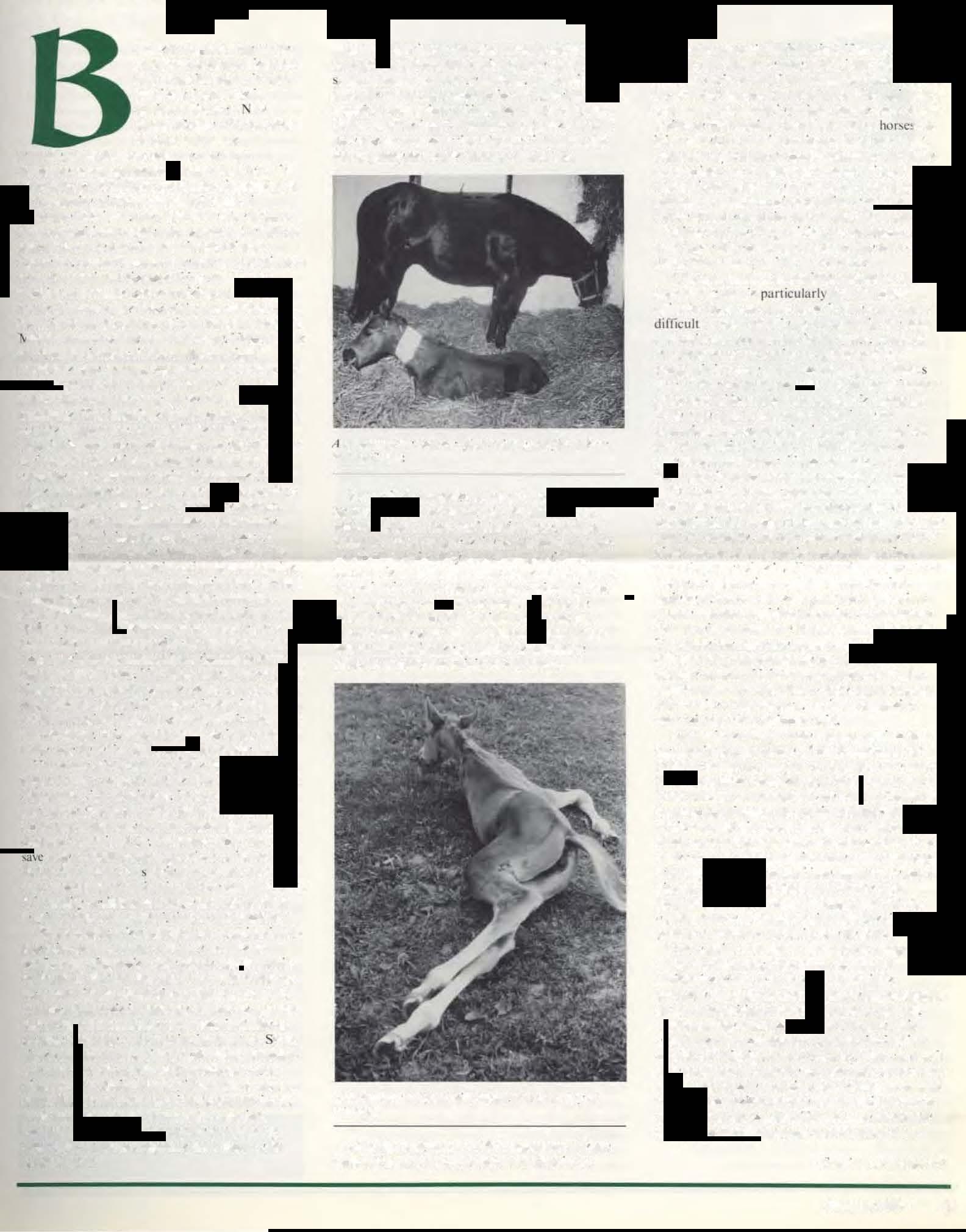
Young luar... arc nl\ht r>n>nt: to butult'm cau�ed b) the ingco.,tiun or o.,pm:... A.� the animal get!> older. it uppcur� that the rnteMmul emironment change!\ anu nu longer i-. lmowble ror the 'pores to produce tnxrn: the\ pa..,., through \\ tthout harm. It 1' thought 1 hut mc.ht �.:a'c' olthe di..ca'e uccurrtng In older hnrw' .lTC due tO tnge\LIOO of tO.\lOS or large numbC'r\ of 'pOre' prc-.ent b) chance m the feed. Dr W htllock 'tre.....ed that mature hur'c� 'ecn with thl dbca-.c came from \\ell-managed I<Hm' .md that it j, cxtremd) dilTrcult to tmcc the u11gtn of the tm;in.
"The antitoxin doc' not cure the Llt�ca::.c." Dr. Whitlock cxrluincd. "ll preH:nt� further pread or the lox1n 10 the hod�. It doc<t not remove the toxin from the alread) affected mot01 L'nd plate� but il b1ndo; the.· circulming ro.x1n. pn.:\cnting it lrom .attaLktng lll\liL 'rlc,. • \11cllcll alllm.d" hmL to be kert \cr� 4uiet \\tth a minimum of phy�tcal actI\it). ",\ lot of tlua..hing and ...truggling JU�t aggr,l\ate!> the condtlllm.'' he '>ald. An animal c.lr pa-.on \\lth botuli�m v.ill not remain paral}led. rhc bOd) UC\dUp!, 11l\� motor end plai!.. at the affected 'iLC!o> and gradualf� the function or mu'ick�return,. I h1' ht:�ltng proce'" can take any\\here frum one tu three \\CCb depending on the .,c\cnt� of the tli,c:a:-.c ''It ,., an expen,l\e rropo,llion." lk W h1tluck !-.atd
Alter the outbreak in 19XI rc'carcher!'. ut Ne\\ Bolton Center bq.t.Hl to produce antitux111 for
Antit0'\111 ;, not the onl) \.\'Capon a�atn:.t thi� di..cc.�-.c. rhc LahnniiOI') l)f the Department of Public llculth. L.tming. MI. declopcd Ll \accinc Cto".Oid) ugain�t botull..m t�pc B lor u'e in horses. This vaccine wa� le�lctl ut T'\c\\ Bolton Center and found to be dlcctive. In .,tudtcs conducted by Dr. Whulod and lm group hor-;c., \\ere injected three time� at monthly inter'<ab with tht: \accinc. Two \\I!Ck� alter the la!'>t injcct1011 the) were challcnged \\ith high do�e� ol toxin. I he) did not de\elop thl! dr�ea�t:. It v.a., fi>untl that thc�c hoN:� had protection lor more than 100 days after the la>t 'accination e\cn though the1r antibod) utcr!'> again't botultnh \\Crc qunc lm\ b) then. The 'aecmc ha' .ahuhc.>cn u...ed tor pn!gnant mare' in Kcntuck). The marc-. ,.ft:vcloped antlbodte' \\hich \\ere ra,,ed to the loah pa!>�i\d} through the coto,trum ghin!! protection at the mo't crHtcal time fm tht: young animal Unfortunatcl). bccau'e nl kgal concern�. th1' \accine j, not a\allabll' lm general dt�tnbuuon out-.idc or \111ch1gan and Kcntuck} The \acdnc" unl} availabll in 'tatcs \\here the .;tate gmernml'nt ha-. ..ignctl u \\ai\CI ...taung that Michigan c.mnot be hdd rc-.pon,tblt: fur Uti) complication� due to the u�agc or tht: \UCcint:. lo c.ltlll.' ottl} Kcnluck} hn� .,igncJ 'uch document and thl: 'tate there (ollllllllt'tlonIWgt' /5
 I mttrc•anclllo "\/11/f..t•t "/oull>t'lll� 't�n•cl/or ut .\t'11 8(1/ton < t'llfct
.-.1 llm·e·lreef..nlcl/oa!Ht/11llflfllfi,mc•n 1/w h'lll tu l't'n•l't'r.l.
I mttrc•anclllo "\/11/f..t•t "/oull>t'lll� 't�n•cl/or ut .\t'11 8(1/ton < t'llfct
.-.1 llm·e·lreef..nlcl/oa!Ht/11llflfllfi,mc•n 1/w h'lll tu l't'n•l't'r.l.
SW111Jic•r /985 3
Shipping Fever and its Prevention
ach year millions ol dollars are lost by the American beef and dairy industries to !>hippLng fever. a debil itating di!>ea!>e of cattle and other large animals. Shipping fever. the layman� term lor infectious bronchopneumonia 1� primarily associated with cattle which have been transported from the farm to leedlots; hmvever. the di�ea·e can !>tnke a herd \\hich hal> never lclt the farm. "The organism� cau�ing infec1iou� bronchopneumonia are every\\here ." �o.aid Dr. Robert M. Dyer, a re!>earcher and lecturer in medicine at Yetennary School of the Univerl>it) of Pennsylvania. "Canlc are constantly cxpo"ed to them. Hm\e\'er. to have an outbreak of the d1sea!>e, three lactors mu�t be present: the viral component. the bacterial component. and a !>tt'Css factor."
It has been found that infection due to one rJirus alone will causejust a mild respiratory infection in unstressed, healthy cattle.
Dr. Dyer explained that at least 20 different viru�s are as!-tociated with the disease and that eight or nine have been definitely identified as causatiH� In addition to viru!>e�. bacteria pia) a maJor role in the disease proce!>s. Stres!>. the third major factor contributing to the su!'.ceptibility to bronchormeumonia cao be transportation. overcro\\dtng, rmshandling poor ventilation. -.tarvation, or dehydration.
It ha'> been found that infection due to one virus ulone will cause just a mild respiratory infection in un ::.tre �;sed healthy cattle However. in animal-; that are stressed. the immune �ystem i!> less rc!>istant. The initial infection by one ag�nt weakens it further and pa,es the way for the invasion of other organisms causing multiple infections resulting in bronchopneumonia
•·tn man) outbreaks . it is not uncommon to find mulliple infections occurring -;imultaneously." explained Dr. Dyer. "The morbidity ma) be as high as IOOOfin a herd \\ith a mortality rate of up to 201'('. One animal may have a viral infection thi1> begins the chain of events. Bacteria which are normally present tn its upper airways invade the lo"-er airway'in the lung and '\evere di.c;casc re"utu•. The animal sheds the viruses and bacteria. and disease spreads:·
1\,ormally a large number of particlt:s and organisms arc liltered out as the animal breathes. Particles wluch do reach the lungs arc expelled by mean" of the mucociliary apparatus, cell-; which line the trachea and the bronchioles and which produce a constant mucous now that is e;-.,pelled. If the�e cells are damaged by infectious agents. gal>eou� irriwnt::. or extremes in temperature, the clearance of infectious agents may be hindered. Antibod1es and cell-mediated immumty protect the upper and lower airways against intcctiou!> agenb. Another protective mechanism is al\·eolar macrophages cells wh1ch will ingest and destroy 'iruses and bacteria. The whole defense mechanism is in a stale of delicate balance and it takes \Cry little to up�et it. Elevated corticosteroid leveb. mhnled pollutants. viral infection and a number of other factors can render the defense mechaoi!>m of the pulmonar) S)"HCm ineffective lea\ing the animal vulnerable to bronchopneumonia.
Dr. Dyer explained that tht.: mo \t commonly tound'iruse associated with !>hipping fe\·er are herpes viruses. parainl1uenn1 \iru..,e�. bovine S)ncytial \irus. adenovirusc!'. bo\ine rhinovirus and bO\ine viral diarrhea virU!>. Each of the�e produces �lightly different S)mptom!> Som�.:. like the parainfluenza viru�. are �hcd for up to 20 day!> lollowing mfection. A number ol bactc1ial infections occur simultancou,Jy to or shortly after expo::.ure to the viruses. The most common arc tho e cau�ed b) pa.,tcurclla nrgan1�rn!>. Vaccine� have been de\'cloped again ::.! thrcl' of the viru-.e!> and one of the bacterial agent:.. HO\\cver. because orthe multitude of infectious agents. the be!>t weapon agairu.t shipping lever is prevention.
.Farmers obviously cannot remove the intectiou!> agcnb from the environment as they are all around us;· said Dr. Oyer. ·'But the) can limit the Sti'Cl>!> factor." He explained that the natlu·e or the beet industr} re4uires extcnl>ive sh1pping of cattle destint!d for the feedlot. "It\ <1 geographic problem.'' he said.. Cattle are raised on pasture in one part of the coumr� and then. when they ur-e about four to live month\ old, arc sent to the leedlols located in the grain producing areas of the countr�." Normally these calves arc \\ith their dam one da}. nursing and grating. The ne\t dn� lhey rind them!>elves in a truck being tran'>poned to a !'>alesbarn and then to a feedlot. The animab sudden!� must feed on grain and silage Jearn to eat from a trough inl>tead of gra /ing or ...m:kling. They can obtain water only from an automated watcnng dcvtce in'>tead ol a �tream or tub. Conditions in d f eeulot are crowded and the young animab must HnJ thc1r place 10 tlw llC\\ �m:ml order of the herd In addition. the calf 1s dl'hurnctl. wormed and castrated. This places considerable sti'Cs!. on the young animal. Many calve' refuse to cal or drinJ.. and become starved and deh)drated. Also. during the tran!>pon and in the feedlot they are exposed to nc\.\' infectious agents which their stressed S)'>terns cannor cCfecti'el) combat
The calf becomes sick with bronchopneumonia. A� the disea�c develop� the animal:.heds the Vlru!> infecting others in the herd. Because Lhe milrgm of profit in cartle rai.,ing i., so '>mall. the kcdlot operator ol'ten treat!, a .,t�.:k animal with antibiotics. II' the firo;t drug doesn't work. anuthe1 one ill tried. This practice can ha\'e dangcrou'> consequences because bacteria c..tuickl) become resistar1t to drug� and often only the more costI) prt>paratiom. will eflectivcly combat the inJection_ It is an cxpen"ive proposition. not only in terms of the money ·peril for antibio tics but al'>o in terms ol the mone) reali1ed later from the sale ol the feedlot cattle. "A sick animal i., a poor weight gainer:· !>aid Dt: Dyer. "It doe" not convert the: feed to bodyv.eight efficient!}. If it is sick for a while. it will never reach the optimum slaughterwetght and becomes an economic burden:·
According to Or. D)er there are -.orne measures that can be taken to reduce the susccptibilit) to shipping fever. Ihe stresl>factor can be 1'Cduced by preconditioning the young calves. ''They could be weaned and aec u�tomed to the feedlot food \\hde still with their dams," said Dr. Dyer. .. Ocworming. castration and dehorning could take place \\hde they are still in a familiar environment about lour weeks prior to -.hipping." In a !'>tudy conducted at Ne\\ Bolton Center it wa� shown that preconditioned calves cxpO!->Cd to �tre�s outperformed stressed cahes not recei\ing preconditioning.
Others have shown that the preconditioned cahel>
experience lesl> weightiO!->'> upon arnval at the feedlot and gain weight at a greater rate than unconditioned animals. TI1c) '>hm,cd an overall h1gher degree oJ \\ellbeing lor the fiN 150 dm� after the arnval on the leedlnt. Thh. penod '" th� mo�t impo nant for cal\'e� tn do well a., mo�t lo�!->es due to te:.pirator) di�easc occur during the first 45 da�� follm,ing arrival at the lot.
01: Dyer at...o pointed out that cattle acc..tuircd in groups ...hould be kept together to minimitc '>Ocial !'>tl't''>.,. It ha!'> been fi.Jund that ''hen group'> <.lr C<jllJe from dd tercnt .,ource-.arc ll1txetl Ln the feedlot. wide-.prcad shedding of'tru.,c� llC't'Uf\ and infectinn n:wlb. He tech that teeJiot operator ... :.hould bu) cattle from fe\\t'l' !'.nurce.., and ke ep each lot of callk �epurute lor at lea�t the lir�t l.t day!> in the feedlot
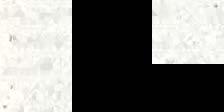
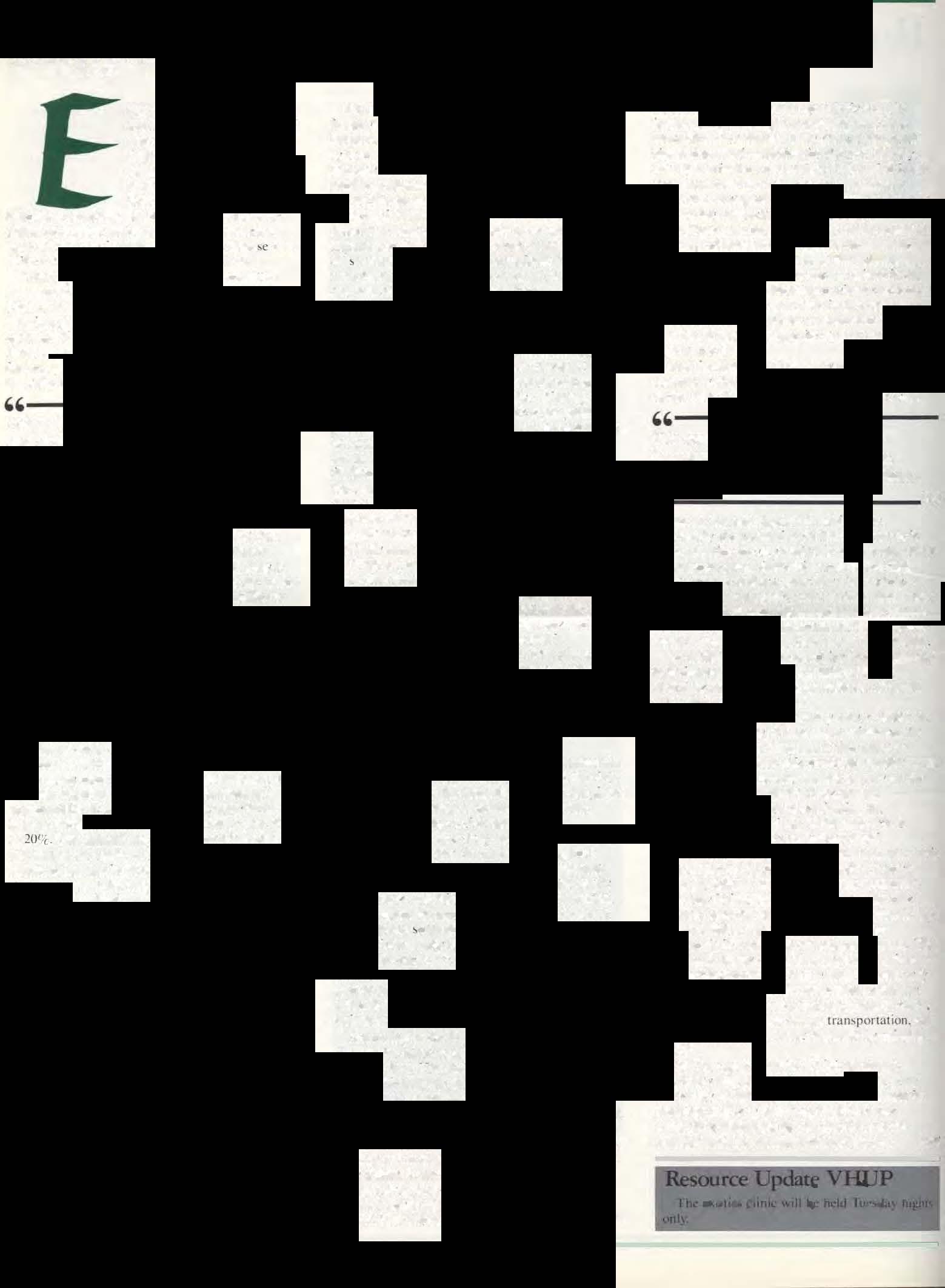
Beef Iarmer'> arc not the onl\ one� who hn\'e to contend''ith -.hipping bcr.Jt aJ.,o affechrutlf) cattle . Here the disl'a\c mo'>t olten occur' \\hen

The orgauisms causing infectious bronchop11eumonia are everywhere.
Cattle are C01lStantly exposed to them.
calve'an� hou,�d together in caU hou-.e....

F-c4uenll.� the \CntilutiOn in the�c strucwn:' 1., poor. re.,ulung in \Cf) moi't air and an ubundam:� of ammonia ga-.e.., from unnr and lc�.:c!>. lligh <.:onl·cntration of the�e ga..e., ha\l' been \hem 11 to damage the airpa!'>:,age-.. maJ..ing the animal more 'ulm:rable to Ji.,ea �c Because.: calves an: con<.:entntted in an cnclo-.cd cnvironml'nt. brom.hopneumonia. once in the barn. cnn spread like \dldlirc
An additional risJ.. on the da1r� farm i-. that lh�: infection can ...preatl to the adult!\. cau�ing abortion� anu re!>ulting in great lO'\'ll'" nf future �tad and mtlk production.
According to Dr Dyer. duiJ) cahc' ...houldbe hou�t:d individual!> in hutche' to mmimitc the spread of inlect iou!'. di.,easc!'>. If they must be hou�ed in a bam then th1� '>tructure should bt! \�ell ventilated and f requently cleaned to prc\cnt the builJ-up of gase� and inlectiou ., ag cnh Dr. D�er ts currently imcl>llgaung the immunologic mechant'>m." of the lung. I 1c i., looking al hO\\ the organ protect..il!>cll biochemically and hm\ the cl'lb kill bacteria. ''l11' bal>iC research," he !>aid. "Not much i� kml\\n about the dcfen.,e mechanio;m 111 the respiratory tract, hov\ ll funct ions and \\hy it brc.aJ..), do\\n. We need to gather much more in1ormation to find a more efficient way to combat bronchcr pneumonia 111 cattle and other large animab. The tradtLional mean:, of \acc1nc), and antibiotic' are not \\Orking too well. Until \\�· find a bt:ttc:r \\a) of t n �uting these animab. prevention is the kc) Good animal hu!--bandry and reduclion of .,trell� be it environmental or due to tran..,portatiun a� \'ital to reducing the los:-.e-.incurred b) shipping fever:·
Or. Dyer graduateu in 1975 from Pt.:nn\ veterin<.tr) school. He did graduate \\ork at the Uni\er!>it) nf Mich.1gan. NO\\ he i!-. a kctur�r10 met.Jicine and i� \\Orking on his Ph.D. His research is ...upported by the USOA and the Pennsyl \'ania Department of Agriculture. /1.11.
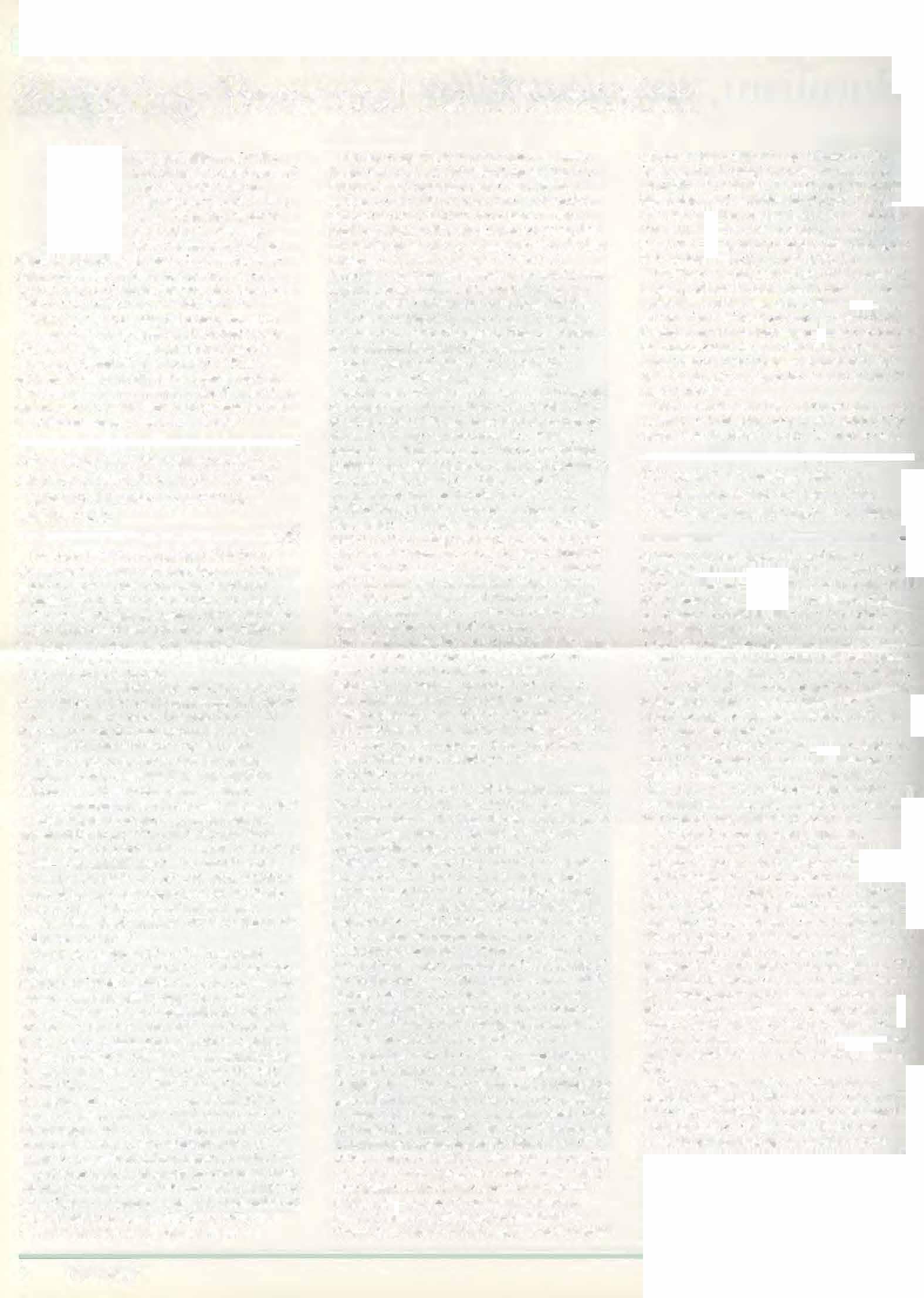
,,____________________
,,
4 Bellwether
,,____________________
,,
I -•• '_:.... �••- ..-• -. • I . - ..- . - . . - ' . -
MarieA.MooreChair inHumaneEthics andAnimalWelfare
Rooert Mar,hal... Dean ol till' Unin:r,it) of 1\·nn')han1<1\ �chuol ol \t:tclinar) \1cdic1nc h�l'> .uwuuncetl the \!'tabli...hmcnt or the nation\ 11r...t •11.\ldcm•c chau in humane ethic� and an1mal \\l'lfarc.
I he Chair. cndO\\-t:d b) M 1'. llv1arie A. Mome ,,f I he Plam-. \ 1rg.1nra. \\ill be t..no'"n a' the M.uu.:\. Moore Chair in Humane Eth1c' and \nirnal \\t:llan; 1t ''til coniCr .tn cs,entml mca-.urc ol n:cog.nrllon and pn,'''igc on humane eth1c' and animal \\Cifare a' a legitimate lield of �c:hnl.u 'hlp.
�1r... \loorc ha-. dc\otcd much of her Ilk to thl' \\cllatc ofanimul' l-or man) �car' "he 111\l'\llgated cu'c" of animnl abu.,e lor the Virgtnia I l'lkration of Jlumane Soc1ctic�. She n:cog.n1tcd tlwt.ltrcneed lor an animal ,hcJtcr 10 F-auqUier Count�. \A.•md �'tabli,hct.l llJlC on her !>11m in The Plain.... Fnr 12 war' 'he ••lmmt �mglch>tmkul� ran thil> -.hcltel ''h1ch mot... 111 and c•m:u (i.)r 22.H70 dug!> large number'> ol humdc's �·Jt'>. ucca.,wn.tl co""· hm'�' �1nd \.\ildhfc In 1970. \lh�n lhe Humane: So..:1et\ ul thL Lnited �t.ltc' Nahli�hcd a 'hdh:r in the cll'Ca. �lr.... \luurc i.'ll)\CJ the 'heltcr lln her l<1r111
l·or her ammal \\elfare \\Or� Mane Mom�· \\as hmwrcd b� the \\.1.,hington \nimal Rescue
I L'CJgue ''hich prc.,cntt:d her \\ ith the \\\..trd ol \k11t. She 'tC:I\t'd tm the Pre'-!dcnt\ Ctluncil of the Humane Sncict� tll the Umletl �late� and ,., an honorary member of the Fairlax Count� Humane �octCl). the Humane Suc1CI\ ul !\e\\ Yorl.. and tht' Amc:ric-..tn Ho1'c Protecthc Suc1ct� fn1 rMn))t';ll'Mr-. Mnnn: hrcd and raced I huroughbrl'J-. hcrt' and 1n Ing.land. Sht�.kHllt."<.. a great dc:aI nf dfort to the Ma,tifJ. bre�d at a tilllc: \\hen thl' h1ced ''<I' bcmg n.'e!>tabli,hed alter uc,,L,lmgto.,,L •.,of hrcl·drng 'tuck dunng tht· \\ar.
TheCharingCross ResearchFund
I he Charing Cro,-; Rewarch ruml to '\.lPflllrt rc,cluc.;h into inlli.lmmator� <.li-.c.;aseo,. of the d,,g·, central nennu� '�'tern \\a' c-.tahli�hcd at th�.: l'nl,er,it) olPcnns�hania Sehoul of \ctcrinar) Mc:utc1ne h) Gilhcrt S. Kahn. 'vtiami. FL, a prormuent brc�.·uel of Japanese Chiru, and an -\"C ltceno;cd judge
··ta�t )ear m� .lapane'it Chan. Cb. Charing. Cro'' Quc�t-Chm-Marl... ,utftlcnl) bec�1mc ill.'" s:11d Mr. Kahn "At iir't \\1.' thoughtthat hehad 1.h'� troubk. lk \\a\ seen h) �1 \eterinari.u1 and rcc:ci\cd mcdkation.� Tht:: dog c..ltd not unprO\c. "We got a -.cc,md opinion. the m<.:d1catwn wa, c:h<mgcd. hut it d1dn't hdp. He died �-ptembcr 5. three \\Cd... alter the fiN 'tgns ol illnc!>:o.." "Murl..o" hau :m inllammatnr) uiscasc ol the .:enu-JI ncnou' ''Mem. labckd GME tgranulomawu... meningo-cnccphaltti.,)
�Thi' i� a Jj.,l•a.,e that can occur in am hrecd

Ill dog:· .. id Dt. Sheldon Stemberg. prol�......or or neurulog_' and Chtcf ol the Secti1)n or �curolog) at thl.' School. M\\c don't t...nm\ \\hat cau'c' it. and 11 1' 1..hHicult to dtagno�c 111.1 It\ mg ammal
Pn,ill\cd1agno'i' can onl) be made rhrough p:.tholog.ical \tUdlt>., alter death "hen \W ln,ll.. for c:haracteristh.:k'ion... "
l>1agno"" '' dilficult lor other rea..,on....
� l}p i call� th.: dog' are not \� 'Lemicall) Ill.� aid
Marie A. \Joort? ll'ith 111'0q/her Mo:,t{f.f�

Her Book. nw Most(ff. was published in 1978 providing an overv ew of the history and development of this breed.

Marie Moore is an AKC Licensed judge and her many assignments have taken her all over North and South America, England and South Africa.
antibodic,.We are al'o domg CAT-scans �1n each u.,pectcd patient These procedures a� quite e'\pensi\c and \\Ould not be po�sible 11 \\C hadn't received the fund� for the study." Concerning treatment. Dr. Steinberg explained ''It has bl·en J..nm\n that pattem · \\ith GME ha"c a temporar� rc-,ponl>c to steroid� But thi' 1s not a long term �ulution. Our lour dogs \\llh GME currently an: treated with cortisone and an immunosuppressant drug on an alternate scht:dule. It appear� to be wort...ing One dog ha., been on the�c medication� since October and it is doing well."
Dr. Stcinbl •rg and hb group are ju't at the beginning of his <;tudy ...1 here are many ljuc·tions to be an'-\wred," he s<lld. "Are we dealing \\ith one di�easc or a group ofdt....ca'c'' ? What I' the cau�e'? Hm\ can \\I! better dmgno!>e it'! Hm\ can \\e treat it effecti\cl�'.'"
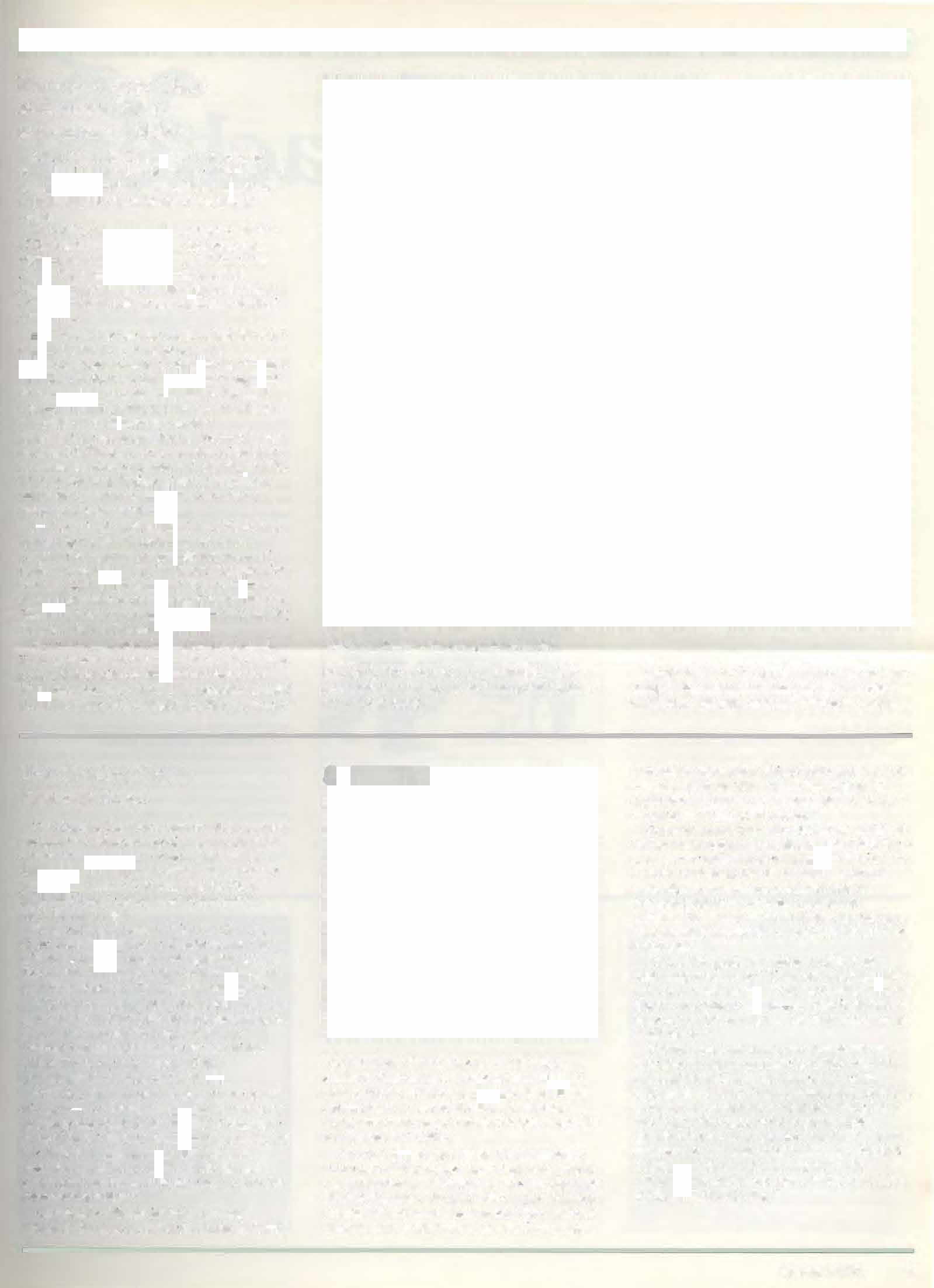
Dr. Steinberg. "Some dogs rna) !>hO\\ '>ig.n� ...imilar to di,k di,easc. a... \\ill> the abe \\ ith Mr "ahn\ Marlo.o. Other' rna) exhtbit .,ign' \\htch indicate that an area of the hram is aftccted. Right now there arc no certain clinical criteria for the tliagno'i' of GME.''
\.Jr. Kahn\ g1fl has enabled Dr. Stcmberg to 'tud) lour afh:cted dog� and to begm to dc\J'>C' a t1eatment method...We want to de\c!Op u ba,h, for clinical diagno...is." he said. ··we are performing a number of \Cr) '>peci<tiJTcd le'l't of the blood and cerebrosp111al Ouid. looking at cell�. protein and
The quc,tion� arc many. Mr Kahn\ gift ha' pro'idcd the means of stud) mg G Mr:. and th is uhtmatd) \\ill benefit the man) dog-. "hich contract the di,ease. "The 'udden. unexpected to"' of Mart...o prompted me to fund tlw, �tlld)." -;aid Mr. Kahn. ''We must find the cause of thi., dreadful dise;he. 1 am plea...cd that Dr Steinberg. already has been abk to help four dugs. Mart...o\ death prm ided me \\ith the impctu� to du 'ometl11ng'tO that other' ma) not have tn ...uflcr the los . or n luvoritc dog:·
r
SL1111111f!l' ICJX5 5
Classof 1985
The University of Pennsylvania avvarded the V.M.D (Veterinariae Medicinac Doctoris) degree to 105 graduates last May 20th. AU other American Veteri11ary Schools award a D.V.M. to th�ir graduate,. The degrees are equivalent. The first clas� graduated from Pennsylvania in 1887. The first woman obtained her degree in 1938. Since that time there have been 4,062 graduates. 3.459 men and 603 women. There were 53 men and 52 women in the Class of 1985.
The number of women choosing veterinary medicine a a profession has been increasing steadily. Total student enrollment in the 27 veterinary colleges in the United States for the 1985-1986 academic year was 8.843. Of these. 4.516 (51. 1%) were men and 4.327 (48.9%) were women. The American Veterinary Medical Association reports that 28� of all qualified applicants were accepted in the 1984 first year class.
At the University of Pennsylvania. the Admbsions Committee received 626 applications for admi��ion to the Class of 1989 (entering in S�:ptt:mbt:r 19R5). Tht numbt:r of applicants has been decrea�ing since 1975 when 1.280 sought admission. The 1985 applicant pool had 211 men and 414 women. It is probable that two-thirds of the Class of 1989 will be women. About 110 are accepted in a clas .
Veterinary medicine offers a wide range of career opportunities in addition to its primary charge ofdelivering health care to animals. Ln the research field. veterinarians were the first to discover filterable viruses. tumor viruses and the cause of viral encephalitide . They also developed tuberculin. tetanus toxoid. the first tumor vaccine. the first pinning techniques in fracture reduction and the lirst hip replacement prosthesis. Veterinarians devised the lirst spinal anesthesia.
VeterinaryStudent GovernmentAwardfor ExcellenceinTeaching

The student government at the School has created an award for excellence in teaching. It was presented for the Cirst time this year to four teachers. The recipients were M�. Carol Hand. an instructor in anatomy: Dr. Geraldine Kaufman. an instructor in intensive care; Dr. Charles Newton. associate professor of orthopedic surgery; and Dr. Charles Reid. professor of radiology.
The award wa� designed to enable each of four classes to honor an individual who exemplified the highest degree of proficiency in teachi'ng. The person chosen could be anyone involved in the educational process (i.e. a laboratory technician. resident. or a full profcsf..or) who made a major contribution to the students' veterinary education
the first electrocardiogram and the first cardiac catheterization. The development of animal models of human disease is a major contribution of the profcs'\ion. The veterinarian also plays an essential role in regulating the ?afety of food and drugs for human use and in maintaining public health standards.
Information about the School. including entrance requiremenb. ma) be obtained by writing to the School of Veterinary Medicine. 3800 Spruce St.. Philadelphia. PA 19 104.
TheCanineConsultant
The Canine Consultant series of six audio cas<;ettes hasjust been introduced. The tape deal with ix specific aspects of a dog's life Selecting a Dog: Welcome Home, Puppy: Puppy Gro"s Up: through dedicated. creative and inlormative teaching.
"AJJ too often people spend an inordinate amount of time preparing and teaching their cla!>ses or rotations v.ithout any tangible ad,nowledgement.'' said Anne Barnhart. president of student government. "Thi� award is intended to thank our teachers for thc.:ir commitment and dedication and to encourage other· to stnvc for Lhc same degree of excellence."

It's a Dog!, Life: Recycled Pet: Your Dog's Final Years.
This new learning method works well \\ah children as �ell � adult!>. II cover., the ob\ iou... Lhing.' that may be overlooked. and the tape� can be played \\hile playing with the puppy. driving the car or coping \\ith the older dog. The) prO\ide a new Wa} to learn about and care for dog�.
SELECTING A DOG give� the pro�pective buyer a verbal dog �how tour. telh what 4ue�t1ons �hould be asked and !>tresses rel.ponsihle dog O\\ncrship.
WELCOME HOME. PUPPY helps establil>h good habits from the minute the pupp) comes 1n the door. It covers the basics for ever) type ol home. owner and dog. A wonderful gift to go wllh a ne\\ puppy.
PUPPY GROWS UP taJ..cs the 0\\ncr through two years including those months of the "terrible teenager''.
IT'S A DOG'S Ll FE emcrs c.:hangc� that tak� place in our liH!�-l>Cparation. divorct:. mming. illness. mis-matches and \llCatioru. (with or without the dog.)
RECYCLED PETn..Ju� to the ''ddopll.d"or ·'inherited" dog. usuall� an olderdog. and explain� ''hy this can be a better choice Lhan a puppy.
YOUR DOG'S FINAL YEARS l!. a -;ympathetic but reali tic approach to get dogand owner through thb dirficu\1 period
There i� much historical tri\ ia along ''ith mHn) facts and helpful hints. The whole series i� a guide for the pet owner and brings attention to bow help can be obtained from veterinarians. brcct.lcrs. groomers. boardmg kennels. dog clubl> and �helters.

The cost is $9.95 for each tape. from Bard�)''D Productions. Inc.. 25 Van Zant St.. East Nor\\alk. CT o6gss.
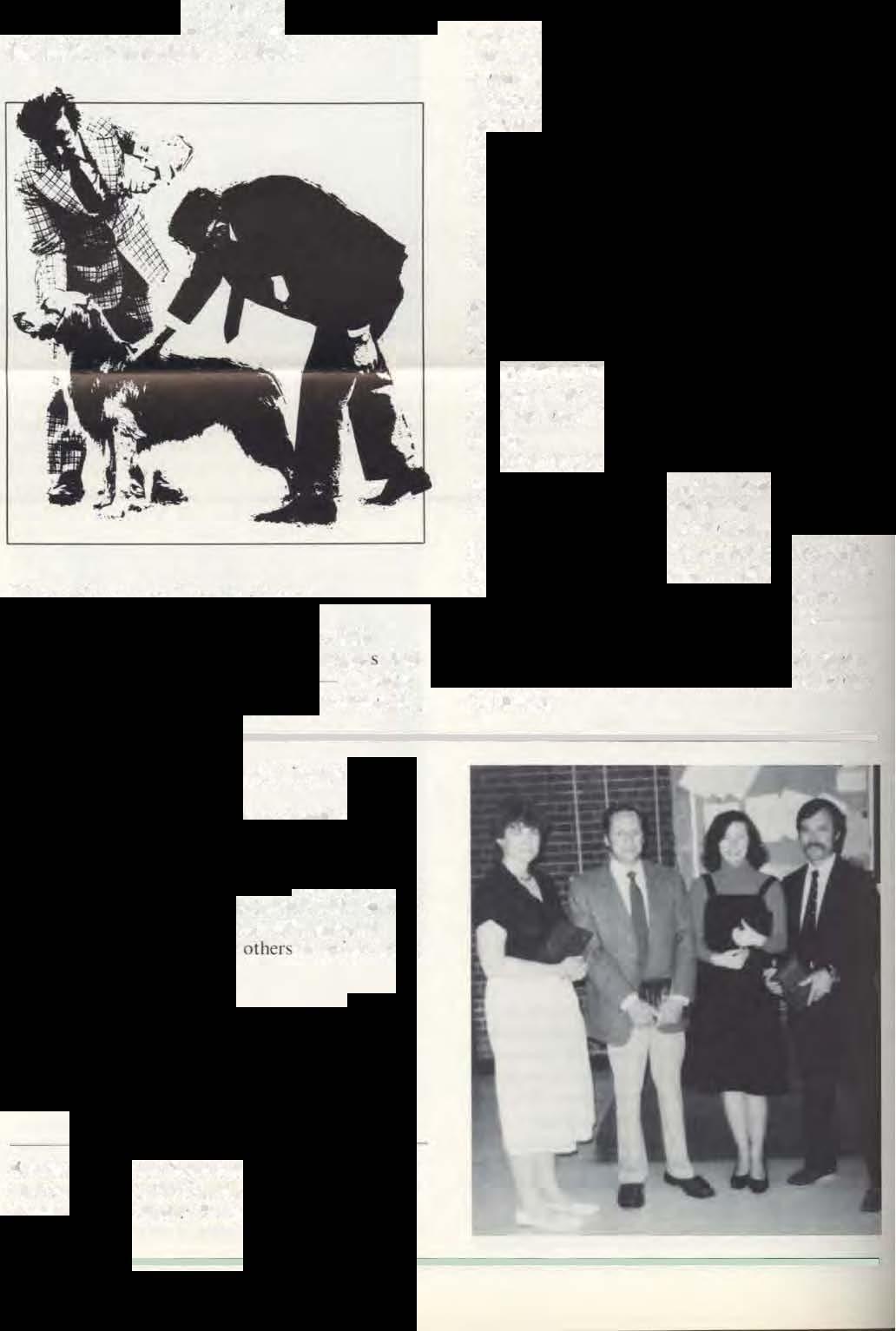
6 Bellwether
l£'ferimu:r Srudeot Gu\'ernment llll'ard Recipients
Ms. Cnrol Hand. D1: Charles Reid. D1: Geraldine Kmdimm. Dr. Charle\ Nt·11·um.
Giariliasis
0iurdw are prol07oan para-.ites which are found world\\ ide. In the United State�. Giarclia account� for the large�l percentage of inte:-tinal par.t!lile:. found in human�. In dogs and cat�. infection ma� not be detected unlcs� a special technique is used-7jnc sultntc centrifugal Ootauon i!. recommended (the sugar and o;;alt �oluttons used routine!) in many laooratorics are often inadequate). Because affected animals rna� not !!>hed cy�u. continualJ�. repeated fecal examinatioffi rna) be nece..sar) k>r diagnul>is.
The most prominent :.ign of (iiortlia infection is diarrhea \\htch rna) be intermittent or chronic. Dcliniti\c diagnos1� depends upon rcco\cry of the organism. �c\eraJ drug.•, are avai1�1ble for treatment. n1e maJorit) of Giurclw inJections are bcl1eved to cau<,e no '>igns ofd1�ease in their host'>.
The hfe cycle of Giardia b direct (no intermediate host is required). Tran�mission is b) the fecal-oral route. Crowded. unsanitaf) condition� and dnnking water contaminated \\ith cysts favor -.pread of infection. There ha been much publiclt) gi\'en outbreak!. 1n human!. traced to contammauon ol water with GiarcliuC)-.t-.. Treatment ol as)mptomatlc cy::.t passer'> (human!.. dog' cat-.. b1rd�. etc.) b recommended because of the potential of the para�ite to cau�e disea e. Clinical giardia�U. can appear tn antmals of an� age. hut animals less than one �ear old seem to be particularly �usccptiblc.
A number of report\ describe giardiasi::. as a ··ne\\·· di-.case. A� the conJition receive" more publicity. it i� probable that it can be diagnosed more frequent!;.. It\ been \\ilh us for a long time. If found in companion unimals, it :.hould be treate<.l. especially because there ts the possibilit� of direct tran...mi-.'-lun to human'\.

�TheCompleteDogBook
The 17th ednion of the Amencan Kennel Club\ THE COM PLETE DOG BOOK hasjw.t been published. Tht� book b intended to ac4uaint the public \\ith the appearance and qualifications of each breed registered by the AKC, and guide O\\ner'\ in keep1ng their dog:. healthy. happ) and well-behaved.
The oflicwl breed standard and histor) of the 119 rure breeds ptcscnLJy rtlCO!:,'lli7ed by the 1\merican Kennel Club arc given. plus a rhmogruph ofeach. In addition. theeare 115
NewPacemakerenables BuckytocompeteatDevon
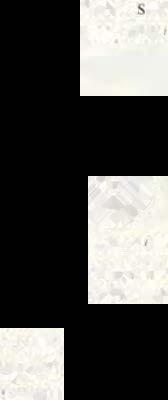
Buck}. the American Quarterhor e with a pacemaker (1JeiiH·Nhe1; Summer l9S4) competed in four classc., in the Local Hunter Dt\i!>tnn at the Devon Hor c Show in Ma). Bud.) wa!l able to participate becau�c a nc\\. mor� sophisticated pactmaker replaced the original device.
I he horse. which has an arythmia caused by a hcurtblock. had been <.loing fLnc wttb the pacemaker implanted last year. His hean beat a steady 45 beats per minute and the animal was fn'lky and acti"c. Ho\\IC\er. he could not be riJden norcould hejump as hi� heart rate coul<.l not increase beyond the 45 bcab.
"A fe\\ \\CCks ago �omeonc donated u more ad\anced pacemaker. one \\hich can increa.:.c the heart rate as the patient exercises:· said Dr. Virginia ReeL the vctennarian \\ho truplanted the
photographs or dog at rest. \\Ork and play. There are constant change� in the world of pure-bred dogs. Since the 16th edition of th1s boo!.. \\as publi'lhed in 1979, Group VIL the Herding Group has been added. made up of 14 breeds previously :.hown in the Working Group. At the present time. there are 24 breeds or vanetie" shown in the Sporting Group I, 21 in the Hound Group II. 19 1n the Working Group Ill. 24 tn the Terner Group IV. 17 in the Toy Group V, 13 in the "Jon-Sporting VI. and 14 in the Herding Group Vll. For those who might check the addition. Poodles are repre�cnted in l\\O group�. t\\O Non-Sporting and one Toy. and there is a Manchester Terrier tn the Terrier Group and in the Toy Group. There are varieties in other breeds. Cocker Spaniels. Bull Terriers and English Toy Spaniel-; are divided b� color, Beagles. Manchester Terrierc; and Poodle!> b) si1.e. and Dachshunds and Chihuahuas b) l)' pc of coat. lf CH'IJ breed and \arict) \"t:rc present at a shm\. there would be 141 dog� representing the 129 breeds.
There is Information about registmtion, dog -.hows. obedience trials. and junior sho\\man!>llip. Charts and a glo::.saf) explain many terms. �ucb as cat fool. hare loot and spla) loot� le\el back. camel back. hollo\\ back and roa�.:h back: �quirrel tail, ·1cl.k tall and -;crew tail: colors �uch as Isabella (fa\\n or light bay). merle (blue-gre: \\ith necb of black) and roan (a mixture ol colored and white hair�-blue roan, orange roan. lemon roan. etc.). ll1c:- answer to man) more quesuon1-. can be found.
A section on Training otTer� advice for the tirsttimc dog O\\ ner as well as the \eteran. It rt!commendl> that ever� dog J..nm\ at lca�t five ba:.ic commands: heel. .\it. d01m. \llll and come. HousebreaJ..mg technique-; are given.
A st:clion on the Health) Dog gives basic \t.lcrinary information. Ihe material was re\ie\\e<.l by faculty members of the Uni\ersir� of PennsylYania's School of Veterinaf) Medicine. Topic., cmcred include The Healthy Dog. Preventive Care. 1\dminMcring Medicine. 'lutrition and Feeding. and Reprodu�tion and Breeding. Signs and S)mptoms of illnC�l> are <.:overe<.l and there is a section on f-ir)>t Aid \\hich gives instructions about \\hat to do in an emergency situation before )ou can reach a veterinarian.
THE COMPLETE DOG BOOK can be called the greatest "inglc n:fercncc on dogs in print and should be in eve0 dog owner\ library. Although it CO'IICfS onl) those orecd.; eligible lor championship competition at dog shows held under American Kennel Club rules. anyone with an understanding
original pacemaker. ··Wnh the previous device. Bucky had one electrode implanted in the right ventricle. Nov. \\e have added another electrode "''hich is placed in the tissue of the atrium. The mo electrodes arc connected and attached to a new pulsegenerator. one "'hich responds to the demands made on the heart by exercise."
The nc\\ pacemaker enables Bucky' heart to beat up to 150 beat'\ per minute. a rate needed for such acLI\it) ru, being ridden and jumping. fences. 'The hor'le can rc:.ume his career as a hunter." Dr. Reef said. "He IS sufe to ride and can be shown. hm\cyer. he cannot be raced on the flat. that would requtre more than 150 beat!> per minute."
Bucky made hi� show debut at Devon and <.lemonsLrated to ever)one that a tiny dt:\ icc. 'iO common in human medicine. can abo benefit the horse and prolong ll!> life.
Buc/,_1 and D1: Ret/ dearinga jump t11 the Del'tm Hon<' Slulll
of ali the information IL contains is a ''dog per<>on·· with a good basic education.
The book h. published by Howell Book Hou'ie and is a>ailable ($16.95} at beuer book tore:. or from the publisher (230 Park Avenue. Ne" York. NY 10169).
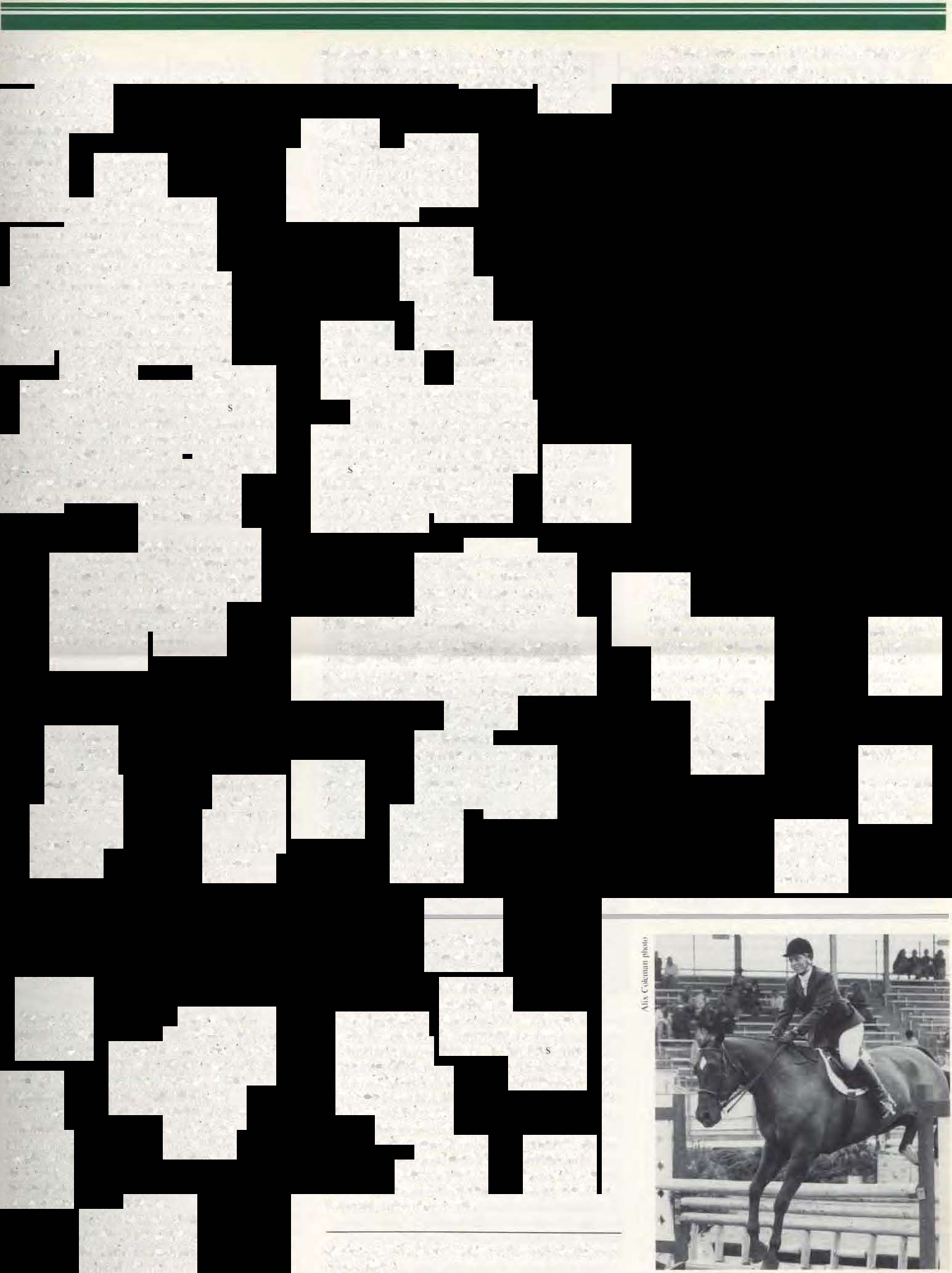
HotWeatherNotes
.The increased incidence of rabies in \\ildlifc makes it extremely important that dogs and cats are vaccinated. Jn 1984. there \\ere 3g4 confirmed rabies cases in Pennsyl\'anja-28I raccoon�. 38 skunks. 35 bats. 8 foxes, 4 cats. J squirrel!:.. J cows. 3 woodchucks. 2 dogs. 2 rabbits. 2 possums. l horse. I pon} and I deer. There were two cases of human rabies in the United States in 1984. one ofthese in Pennsylvania. All dogs and cats should be vaccinated at three months of age, then one year later. then have a booster every two or three years (depending on type of \accine u!>ed). Follow the advice of your veterinarian.
Flea!> and tich arc a constant problem but alway" seem worse in the warm months. It i� necessary to treat the environment anJ use insecticides to kill adults on the animal. New products han.! been developt:d to kill immature forms. Be sure to read iru.tructions-some products are nut safe for �.:ats. Remember to be careful when removing tich al. you may dislodge the body and leave the feeding. parts in the sktn.
MOST lMPORTAJ\T-An automobile with the \Vindows cloc;ed can become a death trap in JUSt a few minutes. Heat -;troke occurs in hot and humid weather. The sign!> are staggering, collapse and even unconsciousness. Cool the animal imm�diatd) b� ...uaking ''ith \\at�.;.r or pa�.:klllg "'ith ice. Adequate ventilation and an ample !>Upply of drinking water arc needed to prevent trouble.
Heartworm is a nationwide problem. Medication to pre\ent infection must bc given daily to prevent infection. particularly when the dog is exposed to mosquitoe�.
"Hot Spots" ar�.: kin lesion� which ma) uc.:cur "'hen the dog scratche�. Reddened. moist areas may appear overnight. There arc numerous home remedies but your veterinarian can recommend a preparation to have available at the first sign of Irouble. Irtheproblem perSIStS. the cause mu�t be determined before an effective treatment can he pre:.cribed.
Summer 1985 7
AdmissionsandFinancialAid


Ill' year Lhe School of Ycterinar) Medic1nc graJuatcd it tOOth cia s. Four yc;,�r!l ago the students in th1s clas· had been successful candidates in a h1ghly compctitJ\C .adrni!.ion'> process. 1 he) then cmbarl\etl on an coucatJonal program ''h1ch demand' rigorou'> full-time application Hm'e"er. 60 percent of the '>ludcnb also bad to contend \\ith the emotional and time-consuming. problem of linancing their educations
In a reaI sen e. adml�'>lon to the School and hnancial Aid ha\c '>Orne interlod.1ng condllions. Mo't wdents appl� i ng for admis'>IOn to Penn·� Veterinary School have a 'trong de-.irc to anend thi-, School Last year lUIWm for Pcnn'>yh ania residents and contract students wa:-. $9,630. The mcdinn tuition for all U.S Veterinary School'> wa:.$3.170. Man) students arc finding it 1ncrcasingl) dllftcuh to meet the high cos1 of vetcnnary medtcal educatton at Penn. Our School offer-. ftnancial aid to tho e 'tudent who qualtf) but becau!>c of our high tuit ion. and because most of our aid is in the form ol loans applicant� foresee a gloom} financial �ituation looming in their future.
I he fnct that we 'ittll ha'c more applteataons than an} other \-etcrinar� school tn the L nited State'> -.peak Yer� htghl) of our reputation. but our unl:l\orable pt>sillon on tuttion and financial <tid may make it more dtlficult to auract the very be!>t �tudents
l·ollowmg is a brid l.lil>CUl>sion of the adrmssil1ns and financial aid "ituattons and a con�idcration of �ullKul the st(!p \\hidt llll.. School i-. t�ktng k impn)\C the picu1r1.\
Admissions
The ndmtssions procedure is one ol the most dtflicuh and timc-eonsummg function-. in the School nf \tetermar) Medtcine. Decistons concermng the admi.,.,iorh of ne\\ -.tudcnt'> re...t with the Admis·ion Commiuee. chaired b) I)!. Joseph F. Skcllc). Associate Dean lor 1\dmi!,sions and Student Affairs. In 1985. there \\ere 626 appl icanb for 109 place�; approxi mately J 10 apphcants \\ere tntentewed by the 1\dmissions Commrllee.
Students admitted to the School come frnm one of -.cvcral categoncs: Pennsylvania rcSidcnt'i. outof-'>t<tle resident-. and contract students. Penn\ Veterinary School ha-. the ...econd h ighest tuition nf ..tn} vcterinar) .,chool in the country. and we are increasing!) concerned about lhi.., dbpurtt) �ot onl� arc \\e interested 10 qual ity student .'"e also \\l'>h to matmain a cll\Ct'oit� tn chts�l'' b:.!'led on -.uch lhings a!> ..,oc10-economic background. maJOr c.ucer· interests. geographic distribution and racial and ethnic origin. With our high tuition und the dr) i ng-up of �ource!> for financial ard. \\C are dccpl\' concerned thnt financial status rna) become an 0\Crridmg factor in student' applying hen.: and becommg matnculams.
StudentFinancial AidProgram
I rnancial a1d. unlortunately ha bl:comc a major feature ol acadcm1c ltfe for ahnut ()() percent tll studcnh in the VetcrinaJ} School. Unlurtunate in thut it contributes s1gmlicantl) to the strC\l> felt b) man) srudcnts in their rigorous educational program and it ts the �ource ofa suh-.tantlal debt load accumulated b) the time of graduatton.
Ehglbtlit) for linancaal atd at lhc \tctcr mary <ichool t-. based -.t11ctl� on the demon-.trution of need b) the studem. Need 1� establtshcd by a careful scrutiny or a student's and hi'>' her famil) 's financial '>ituauon.
Once a need "documented. the :.tudcnt becomes eligibk lor \tlrtou:-. t)pes of atd l the \ti:tcnnaf) School almost all linanctal atd ts an the form of loans: \\e ha\e only ltmitcJ '>cholarship fun<.!!>.
The lir!.t $5.000 of an) need mu:.tbe met ''ith a Guaranteed Student Loun (GSL) which the ..tudcnt obtain from n participating bant... Thi:. loan �:.at 8 percent intcr�t which " patd l"ly the ledcr.il gO\crnmcnt \\hrle the -.tudcnt i-. 1n school. II a "tudcm' s need exceed-. $5.000 he -.he hecomes t:hgiblc for other feucral lunds \\hic.:h arc admini!ltered by the Universit). The two primal')' loan '>OUrcc-. in this categor> are the 'utional Direct Student Loan ( DSL) and the Health Profc-.-.ions Loan 1H Pl ) The ;-...OSL I'> at 5 percent interest Jnd the H PL mtcrc,l ts 9 percent.
Students rna) al..,o qualtfy for a1cl through the Wor"-Study Program 111 which an indiv1dual i f"Urd for wort-. (e.g. feeding ammab. \\a,hing ght!>,\\are. L) pi ng and filtng) perlormcd usually m the Vctcnnar) School 1hi' t'> a lederalh funded progrdm.
\\hich cannot be exceeded. For example, the GSL ha'> an annual ltm1t of $5,000 and un aggregate limtt of $25,000. includi ng loam, made 10 undcrgraduatc sehoul. 1 he �OSI. hc.�s <.111 aggregate ceiling. of$12.000. including UJlt.lergrauuatc Joan., Becau.sc of the highe1 co..t•11 our cducat1onal pmgram (tncrca..cd tuttiun. higher CO\(S of booh and IO'trumenh) nMn) .,tuJelllS 110\\ reach the limn ol thetr '\D. I dtgihrltt� b) the -,econd or third year in school. \¥hen thill •� the ca�c the -.tudent mu:-t U!>Uall\ obtain loan' al the higher inten!-,t rule :\ !>ccond maJor rroblem. abo related to the htghcr cosb of education. ts that !.ludent-. arc acl·umulaung loan dehb of ..wggcring le\cl' An anal)..is of 51 !>tudcnt' 1n the 1985 graduaung ciao;:- reveal-. loan dl·bt-. from $29.300 tu S63.93X. Thu� many stuuenh jusl beginntng profc.,sional and lamil) life (including purcha-.c ufnpen-.i\e in-.trumenh and equtpment. a hnmc, etc.) are faced ''1th an almo-.t OYCf\\helm1ng financial 'Illmilton. �pct:tall) "hen one con,idct., that the U\Cragc slartll'lg Income o( a \Clcrinarian 1\ abollt $1<.1.500.
If even a pall of lhe change., f'liOpowd by the fcdcr.tl adminl\tr:illlm are enacted IntO Ia\\. \\C lac� a 'it uation Ill \\hrch there .,lmpl) \\Ill not he enough aid monc� <t\illlabk rn .tn) form to meet \tudcnt1-' need' a' the) are prc!>cntl) dcterminoo r\\(1 approaches \\hrch would nh\ 1\)ll,ly ha\c a great positi\c lmJ')act on the gloomy linam:1al aiu picture are to lo\\cr tUillOn and 10 create a large endn\\mt:nt fund II.H 'iCholarsh1p a1d Rl··lll,trcall\. neither ol thc..,e change!> can bl: c:\pcc.ted tn the llllltleJt..th: futUft.


I he Vetennar� �chool thb �CilJ ha' t.Jken �omt: o;tcp:-. to imprO\e the financial picture and to hdp 3 IIL'\. iate some of 1hc strcs!t now felth� ...wdcnts. Dean Robert R. Mar,hak has directed that scholar h1p� ot $3.000 eath be a\\urdcd to fne students 111 the mcnm1ng cl<b' on a mcnt ba-.1.... I hi.· l>Cholar..,hiP' \\til continueturthermuyean ''hilc a tudent i-. in 'chool and \\ill enahle U!> to attract outstandtng 'tudem-. ""hn might gC1 cbcwhere to school at a lo\\'Cr lllilion.
In tddition to thc:.,c loan'> and the Wor"·Study Progtam, the Vctcrinaf) School ha-. -.orne -.mall loan and :-.cholaf'h ip fund� "hich are !>Ct up b) indi\ 1duals. 1-.cnnd club and phurmaceuucal firm
If the entire need ol a student cannot be met through these .,ourccs. two cour.,es of action arc open: (I) the \ludent must obtain oubidc loans at u h1ghcr rate ol tntc:rc.,t.or(1) the V�o:tennar: School sub�idi1c:. the Financial Aid Program '"ith loan cholar:.htp mane}.
1 here arc two type ol higher rntcrc:-.t loans <lVatlable to our '\tudents, both of wh1ch arc obtamcd by the '>tudent applying direct ly to a lender. One of thl''C i-. the HEAL loan ( Health [ducation A)sistance Loan) and the othcr ,., the PLL Sloan {Parental Lclclns to A...-.i..t Students) ·r he PLL!S Joan is current!) at 12 percent interest v.h•ch mu:.t be pard "'bile the student I' in -.chool lnten.:st on the H EI\L loan varie With 1hc rate ol 'lrca-.Uf)' Bills (maxtmum rate of91-da) f-bill pith 3.6 percent), and \\hue 11 ma) he deterred until gmduation. it bcgish to at·cruc at thC" time the: loan is made. RecentI) the Penn))\han1a Higher Educatiun ""'�lance Agcnc} (PH EAA) has begun to i:.sue II EAL loan!> at a leso;cr rate of interc�t (maximum rate of9 -da" ·1-bill minus 0.5-1 .0 percent).
Mo-.t of the major loan program... h<t\l hmit
I his year the School also publi...hcd .1 lla11dhookWI \tu<klll Finamwl"'ltcl''hich contatns detatlcd mlormallon about tum need �� determined. loan,, rcpa�ment �chcduk-.. �tc omc of tht: appt\.hcmton' -.tudcnt' cxpcnence about financial aid are n:lated to not ha\tng enough inrorm;Hion (or hl:l\ ing faulty information! about the total Pmg.ram. The 1/anclhouk ,houiJ help alle,iatc tht,.
\\e are prc..�ntl) de\eloping a computer pmgmm "hich v.ill cnahle :.tudcnh to ob1ain mformauoo <thout ho\\ the} rna) manage their loun debb lm a ten year pemxl alter graduation. Thi� program \\oill be tailored to the mdhtdual and it wiU be based on a student\ anticipated 'ituation during thi' u:n )'ear penod (I.e 1�pet'l \\Ork. anticipated .,aJar). famtl) �lluati<ln. ctcJ. \gam. \\l" bcltc\c that this t..nm\lcdgc \\.IllhelpIn lc sen -,tudems· cuncern about thetr tinanc1al -.11uatton. The program \HII be aH11Iable 1n the �tcadcmu.: year 19H5-86.
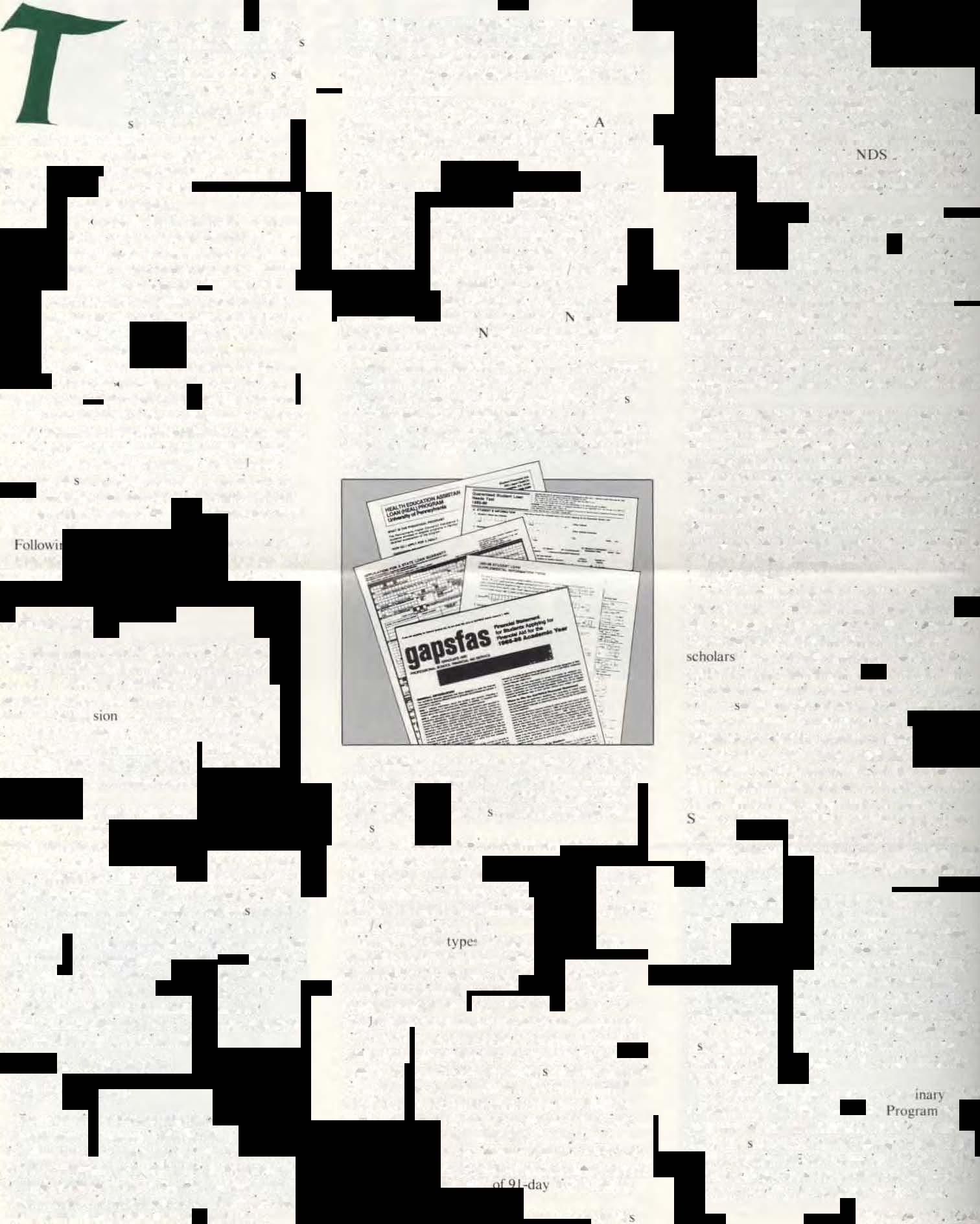
As \\as tht: Crtlll.. last vear. the Vctc:rtnan �ch<'>i� \\ill -.ubsidve tht> hnm�cial \id rogwm for .,tudcnts \\hose demon-.tn ned n�..-cd '" not mer \\lth the Ul!ual ourcc' of mone}. Man� ..tudcm' \\ill need to obtatn II I AL Loan:. 1n lt)K5-Xt. and the �<.:hool ""ill pa) tntcrest on the'ie 'itl that 11 doe� nnt accrue "'hilc the 'tuden� are tn .,chool John1.: \lm1111 I t/.1!


8 Bel/�1·ether
A NewInheritedDisorder inEnglishSpringerSpaniels
Hel\!ditary ddcLtl> are comm�m 1n the canine population. du� partially to the: nw ro\\ genetic pt)\11 in cert.lin breeds and the r�quent mbrcedmg. "1an) hercditar) d1"�ase-. arc cau,cd b\ an cnl\·me defect re-.ult i ng m metabolic d�...turban .. that can be llle-thrc:Hcnmg.
Dt ur.. Giget. <I young faculty member at 1\:nn\ <ichool ol Vctcrinar) Medicine. i:. 10\c,ligatmg ..t nc\\l) recognt1cl.l eOJ)me ticket. naml!h. a pho,phofructokma�c dt:ficienc) in red bk1od cells of some Engli�h Spnngcr �pankt-..
I hew �tudies \\-1:TC: Initiated at the Uni\er:.ity or llondu111 collahonuion ''ith Dr. J. W. Harvc..') \\htT�o: Dr. Gtgcr ''a!'I a po,tdoctoral leliO\" and rc"tkm in 'mall antmal medicnc.:. Retinal d\'rlasm and ruge ')ndrome >Ire l\\O other mhentcd d1snrtkr� in E nglil>h Springer ..panic!' that have been previous!) studied at the Uni\crsit) ,,f P�:nn�yl.,anta
Pho-.phofrucwkmase... m..qnr n.·gulator) en/\me in all cell-.. �atalv7el> the mctaboh-.m ol 'uga1 and thereby is c�:niral in the production nf �·n�:t !!\ to maimaul normal ccll lunction The: dttu:�l leatun:' ol thil> en7) me ddicienc� atc mtcrmmem ancmm \\ith \\t:al..nc-. and pak gum-.. anu llark urine \\hich range., from omnge to collcc-bro\\ 11 cnlmcd. lntere•ai ngl�. <� cri�i-. of uncm�a and dark urine can be r• ecipitntctl b)
PioneerBlack VeterinariansatPenn
f>r Wtlhum ll Waddell cV'35) \\:L' the ,i,th bl.td gradurtc<l Irom the \dt110l ot Vc:h:rlnat) Medicine at IlK' Unl\er-.il) of Pcrlfl',ylvania. In the 50 \�.Irs since lea\ in� P�:nn hc-ha' C:ll'\ed nuL an out-.tanding l<tn!\.:r i many lcld�-pract ice. l'dUC'Jtion, m1litaf'\ �ervtcc. ment<tl health acti, it ic�. go\l:rnment wo1!.. and <1 continuing 1ntcn�l>t m �ht: recruitment anti retention of minor 11� :>llldt:nt:.. 0� Waddell ha' \\rittcn on the ht�llll\ of blad \Cterinarian' and h1� matct ml 'ief'"'"a, the 'tlurcc of much ul the informution presented here.

lkJ{m� commg to the Veterinary Schvol. Dr Waddell attcndc..·d the Manaso;a, lndu·tnal <ichool in \ rrginia and then graduall:d frum Ltncoln llnJ\c:rsll). 0\lord, PA. Soon ;�ftcr grat.luauun ftom Penn he became aflihated \\lth Tu.,kcgcc ln'ltitutc. Alahftma. wbere he eventual!) became drn.:ctor olthc Veterinary Di\ iMon. In 19.17, along \lth Dr. Jesse R. Oti-.. he wu" tmtrumental in li.luodmg the fin>t black wtctinan �chool at thi' llhlltutt-;,n, and he o.,erved as ucu�g dean. Dunng World War II Dr. Waddell was n.:gimenl<ll \Ctcrmarian of the famous �th Cavalf} and rarttc1patctl 1n ft)llt major campatgns. After the Wat he pr.tcticcd 111 \\e�t Vtrginia and '\orth 0Jkota and lor ten )ear!> he\\Orkcd for the L'.S. Department of Agriculture. In both We..tVirg1nia and North Dakota Dr. Waddell was acti'vc in mental health allltJrl> and he recel\cd commcndallun'from the gmcrnor-. of both of the..c state' lor Ihco;c UCll\ IIic'
Dt. Waddell \\-a:. the firo.,l black member of Lhe Am�:rican VctcrinJry Medical A-.�ociatiun and he h.t.. received alumni awards from the \1ana,�as ln<lu,trial School. Lrncoln l nl\er...it). and in 1970 he W:b the n:c1p1ent of a Gencral l\lumn1 Soctel� A\\ard from thl' lJnrversit) ol Penn )lvan1a. In 191<4 Dr. Waddell \\-as presented \\ ith the Ccntcnmal Awnrd ol Ment b} the School ot \ctc1 inaf) ll.kdidnc
hypencntilation. 1-f) penenttlatton occur.., readily m .t.ll dog-. 0\\lng to Lhctr tendency to pant and n:gulatc thctr b{>d) tempcn:tturc b) th" mcun-.. Thu-.. exce�'>i\e panting. prolonged harking. c�crci..e. heat und humid it) can 1nduce an cp1�ode
.\dmissionat II A\I 111/25/82
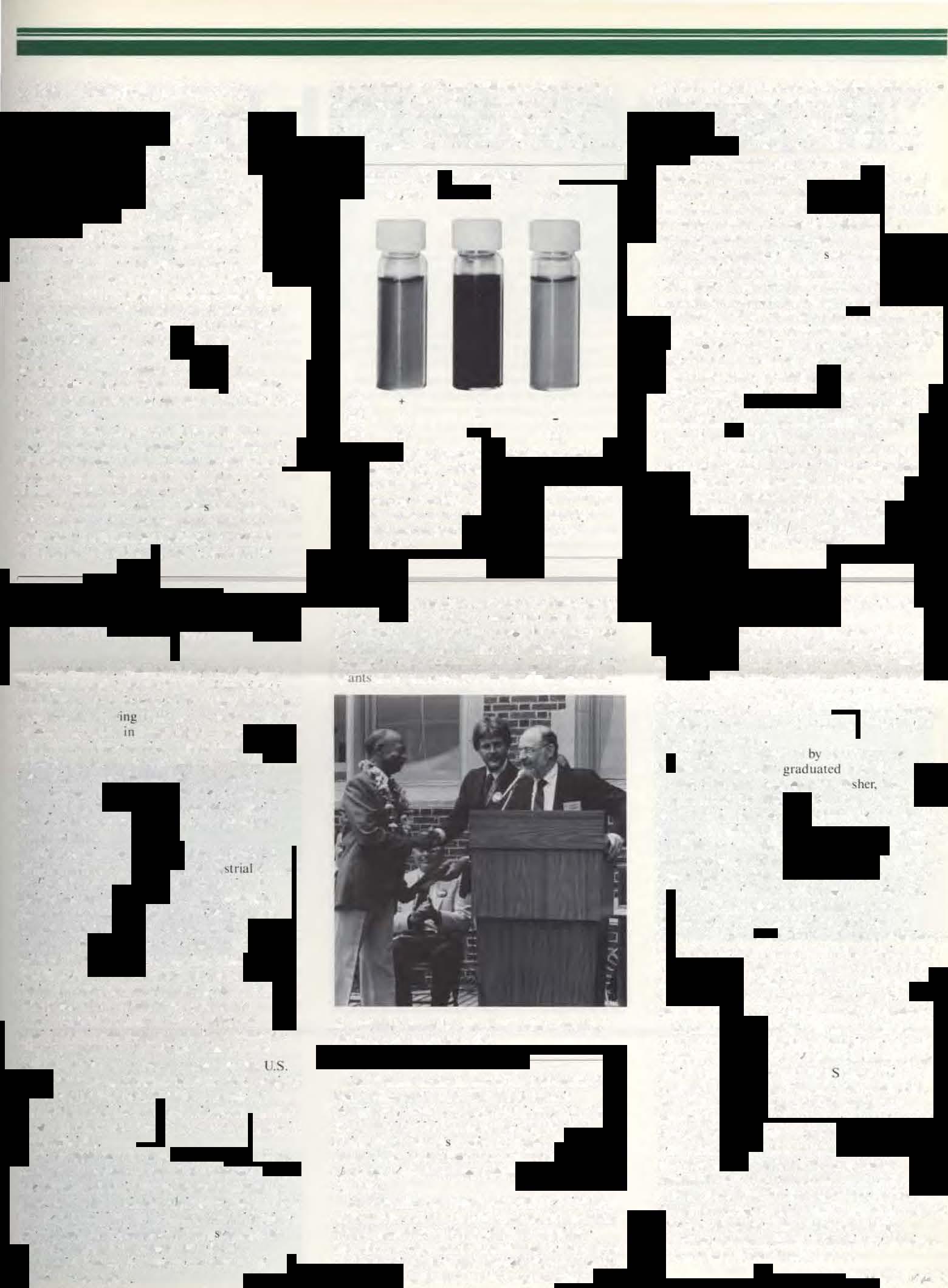
10P\1 + 6.0 Urinesamples (specimen.<•)from adog wirh en=yme dejidem·1: Urine wa.\collecledbefore (left), during (middle)andq(ler(ri�hr)acrisis inducedh.t e\i'rcise. The\amplein themiddle inc/i(·ate::. tlte!>e\·erepigmenruriacawedbr hreakdownpmduc!::.from redbloodt'l'll destructiun.

Dr. Waddell continues to ha-ve an acti\e mtcrest 10 the educ<.�tion of hlad. \l.'tcn mtr) i>tuc.Jcnh. A� a pa1 t of thil> inten:o.,l he ha� c�wblished loan fund� •tt both Tuskc:gcc and Penn. Dr. Wadl.ldl .tnd fri..:nd-. ha\c C<)ntributed to th..: lund at Penn "h1ch gr.tnl eml:I!,�Ol:) lu<rn-. to :rll qudlifkd st\l<.lcnh
of acceleratt:d de,truction of red blood cell:. due to th�o: l!llL)me dcfic1cnc) and rc.,ult in a lo\\cr red blood cell count (anemia) .mel dark unnt: (pigmentuna) lor a fC\\ da)�. fhe dark urmc IS cau!.cd by the presence of massive amount of bilirubin. a pigment that is formed from hemoglobi n released rrom dcl>tructed red blood cell-. (hemol\.,i.,). Some affected dogs ha'c \"eT) mild s1ens. �nd other affected dogs appear tu have le,., lik�ly problems 1f '>trc,-;ful episode' that induce hypoventilation arc avoided.
Dr. Giger prel>entl� !..now� C\en affected �how ,md field tnal English Springer :spaniels of one to e1ght }ear-. of age. A� mo!lt cnryme detect�. phosphofructnktnase dcfic1ency is autosomal rcces�ive inherited. Mating of two car•ricr :.111imal... \\ill result an aflected. earner and unaffected dogl>. ,\ diagnu'i' of this da-.order can be made b} the aho"e menttoncd climcal r�:utures and tn Dr. Giger':. laboratory by mca�uring the eruyme activitv 1n -.mull lresh blood sample� Carricr:s can be dct�cted by the same lahoratory tc:.ts. This is a rure inherued ui...order and Cngla:sh Springer '>pamel breeder' '\hould not be alarmed
Dr. Giger hopcl> to 10\C�llgatc further the pre..,alcm:e in thi!!o breed, the mechanism ol red blood cell de:strucuon. and tht:rapcutic management of thil> dbordct. Further information i� available rrom Dr. U. Giger. Department of Cllnacal Studie... (Philadelphia), VHUP IfI. 39th and Spruce Street�. Philadelphia, PA 19 104.
two vears in Philadelphia. In 1900 he tclocatcd to Lynchburg. Virginia.
The -;econd black to g1aduute from Penn·� Vcterimm School was John Baxter Ta,lor in 1908 In the 'lla�c \ear Dr. Ta\l<'lr '�� the f1,.:,1 black to panicipatLin lin: 01) mpiL <lame" tn \\htchhe \\nn a gold mcdul th a member of the United States 1600 meter rcla\ team. Not long after hb historyntalo ng petlorn',ance in the Games, .John ru) lor d1ctl of pneumonia


Dr. Ta\ lut \\cJ� rollo\\ed b\ Dr. Corncliu'>
Dr. Waddell j, the author of \C\'eral books. I n 1965 he fir.,t published The Wad.. Man 111 J l!lt'l'111arr \/(,dieine (Tavlor Publt�hing C'n Texa!. & Califom1a ). I ht"> \\a�-rcccnLI} repubh,hed (F-ne�en). Ik h�" al o \\ntlcn Pellple ur,• llw 1-illlflte\1 A nmwl\ (Dorrance:, Philadelphia). und l ni\w.wl I eterinariuni.\111 (Manitoba Pubti...hers. Canada).
Or. Waddell� n:search on the hil>tor� ol black \ctcnlllirian-. re\cab that the fir-.t bind graduaLe 111 the: Uni\Cr�Jt}' of Penn")lvama·� Vctcnnur) <ichool wa> Augu-;tu" N. Luo.,hington \\hu came to the School from Tnnidad. Brit1sh We-;t lndic-o,. Dr Lu-,hrngton graduated in 1897 and practiced lor
Vanderb(Jt LO\\-c who graduated in 1909. Louil> E. Baxter 1910. and AugustU!> M. Fi·her. I� 12. ,\ccordinuw Or. Waddell. Dr. LO\\C W'.ts the fir!>! blad \.Cl;rtnanan to be employed b) the Ill'\\ U.S. Bureau or Ammal Industry ( BAI) and throughout h1s lifeurm: \\Us innuential in stimulatmg man) black tw..lcnt... to choo..,c vctcrinar� medicine a!> a career. Lour-. L Baxter 'encd a!> a lieutenant in World War I \\tth the 22ntl Ho,pital L'nu. l..S Arm) and then practiced lor man} yearl> in Bernards\ illc. 'IJJ. At one tune he -,encd a' prc)ident of th�: NAACP. Dr. risher. in atldiuon to hb c;tudiec; at Penn. alc;o -.tudicd for brief period" at the Royal \'etcrinar) College. London. and at the Hahnemann Med1cal College. Philadelphia. lie practiced for a period in Titus\illc. PA. and 1hen joined the U.S. Department of Agriculture. Dr. Jane Himoncv�g) Wil') the fir�l black \\Oman to graduate from the \'etennat) School. Dr. Hinton\ lather. Dr. \\ llh<�m A. ll mton. was a proless(lr at llarvard Medical •ehool. Pr1or to comi ng tn Penn. Jane llintun. after graduation ltom Simmon' College in 1939. worked in bacteriolol!ical re!lear�h and wa-. a memhcr of the llamlrd �kdical School [xpeditinn to C1nada \\here l>ht: )tudicd some communicable <Jio.,ca!IC!!> that had become epitlcm1c in army troors ')talloned lhcrc Dr. H inton alo;o spent three years. during \\orld War II tn a l.tborator) at t-ort Huachuca Arm) Ho-.plt<tl, She entered the lederal o.,cn ice 111 the carl� 1960' anti i-. prcl!cntl) J veterinar) medical officer 10 Vetennar) Senrce'> and is �tatiuncd in Mus�achu�cll�.

Jolt11E. \/arlin I. \I.n.

Br llh pll II \\-1 + 8.0
1Pl\1 + + 8.0
Dr. Waddellreceiving the Cl'ntennialAll'ardc�f Meri1on AlumniDay 1984.
Summer 1985 9
"W.I\�Jasettes & Ribb
The Suburban Veterinary Medical Association in Montgomery County. Pa. elected the following officers: Dr. Steven G. Prier (V'8J ), president: Dr. Joseph Stefanacci (V'83), vice pre!.idem: Dr. Michael J. Herman (V'81), treasurer: Dr. Eugene A. Barnsteiner (V'80), secretary.
Dr. Richard Klesmer (V'61), was installed as the president ofthe Nev. Jersey Veterinary Medical Association in April 1985.
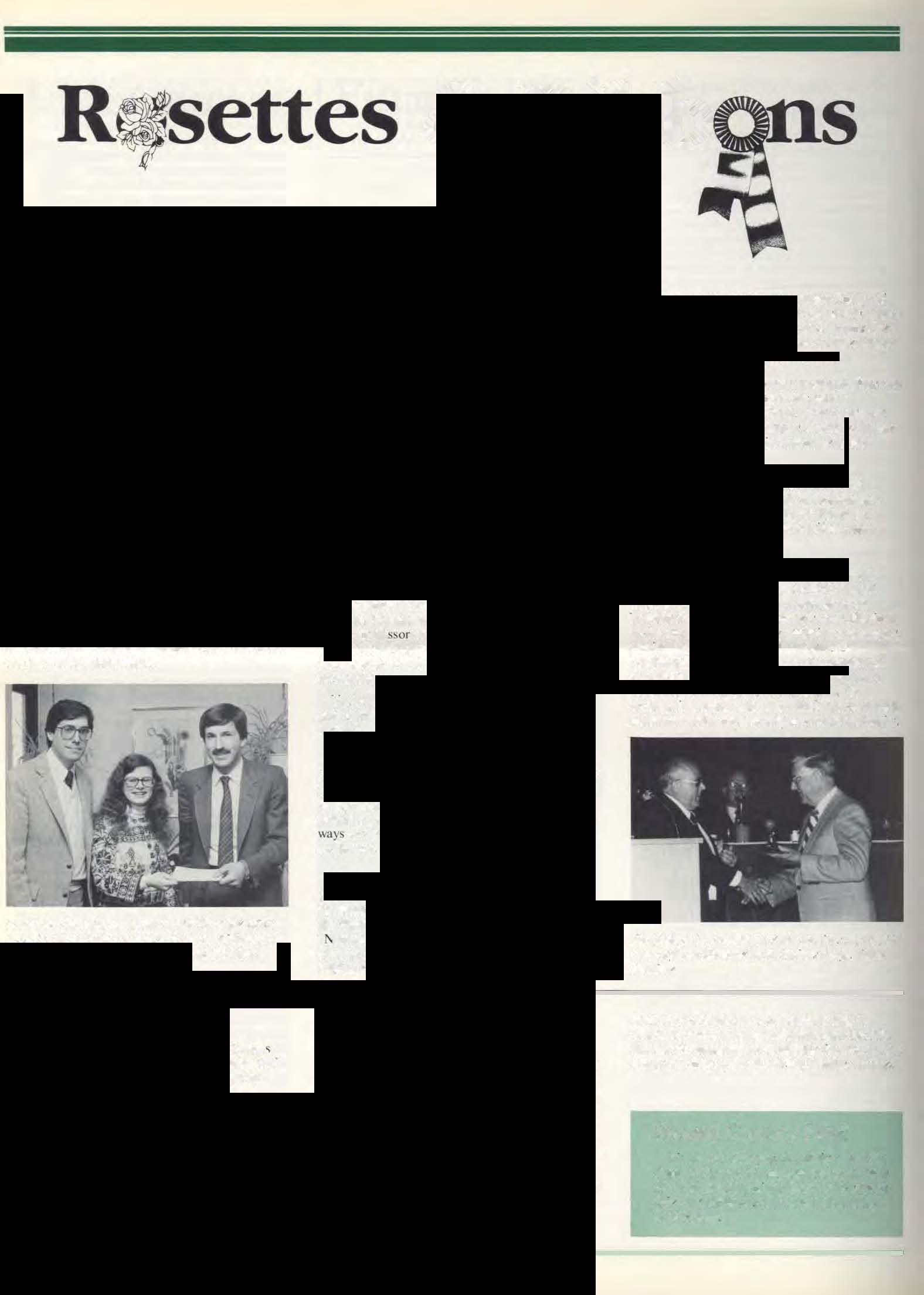
Dr. Cu�tavo Aguirre (V'68), associate professor of ophthalmology. announced that the Inherited Eye Diseases Studies Unit recehed a grant of $10,000 from the American Irish Seller Foundation for the study of PRA carrier detection in Irish sellers. Additional funds for PRA research by the ED U vere received from the American Shetland Sheepdog Asl.ociation, which contributed $2,500. and the Collie Club of America. which gave $3.000.
LeslieC. Herr, a third year student. received the EVSCO Prize in Parasitology for her essay "Trichinosis in the U.S.: Why hasn't it been eradicated'!" The EVSCO essay competition is open to all veterinary students. and there is only one recipient per year. Ms. Herr is active in the student-run Wildlife Service and in the International Veterinary Medicine Club. The prize carries a $500 scholarship.
SalsburyScholarships
The Dr. J.E. Salsbury Foundation of Charle. City. lA, made a $100.000 grant to the School ol Veterinary Medicine to endow scholarships for senior veterinary students.
Dr. Jo�eph Edward Sabbury. after whom the foundation i� named. v.as a pioneering and enterprising veterinarian. He arrived in this country in 190t( and worked in IUinois and California where he bcc.:1me interested in veterinary medicine. In 1911 he enrolled at Kansas City Veterinar) College. Early in his career Dr. Sal bury became interested in the treatment of poultry. a neglected field of veterinary medicine at that time. He
Daryl Biery D.V.M., as ociate profe c;or of radiolog� and Chief. Section nf Radiology, has been appointed Chairman of the DepaJ·tmcnt of Clinical Studies in Philadelphia.
Roger Caras, noted author and commentator and a member of the School's Board of Overseers. has been appointed Adjunct Professor of Animal Ecology in the Department of Clinical Studies. The AVMA awarded Mr. Caras the fir�t AVMA Humane Awc�rd. II was presented during the Inaugural and Awards Luncheon at the association's annual meeting in Las Vegas.
Drs. Corinne Raphel Sweene). Raymond W. Sweeney Ill (V'82) and lawrence R. Soma (\''57) received a grant from the Board of the Uni,crsity of Pennsylvania Research Foundation for their proposal "Mctronida7olc: Phannakinetic� in the Horo;e After Oral and lmra\'cnou� Administration."
New Bolton Center was the location for theJOint regional meeting of the Helminthological Society of Wa�hington. the New Society filr Parasitology and the Royal Society forTropical Medicine and Hygiene. The meeting. chaired by Dr. Gerhard A. Schad. profe·sor of para�itolog}, took place on May II. Dr. Leon Weiss, Grace Lambert Lansing Professor of Cell Biology. participated as one or the speakers.
I he Audio-Visual Committee at the School is now chaired by Dr. Colin Harvey, profcs�or of �urgery.
Dr. Donald Abt (V'61). professor of epidemiology and biostatistics and associate dean. was the principal speaker at the Alumni Club of Lehigh Valley meeting in May. Dr. Abt discussed veterinary metlicim; and some of the more unique way· in which today's veterinarians practice their profession.
Dr. Lawrence Glickman (V72), associate profes!:IOr of epidemiology and Chief. Section of Epidemiology. attended a 'wrkshop �ponsorcd by the National Academy of Sciences entitled " 1atural Exposure Studies of Animab and Human Risk A1isessment.'' The workshop was held in April in Washington.
reaJi1ed the Importance of poultry flocks to the farm economy and set ou1 to prevent the losses incurred by poultry disea:..es.
Dr. Salsbury de\'cloped several poultry biologic-. which helped to combat disease in nock.s. Hb products quickly gained acceptance. and in 1919 the Dr. Salsbury Laboratories were buill in Charles City. lA. to manufacture the biologics. Distribution soon became nationwide and the company grew. Today the Salsbury Laboratories occupy a large. modern research complex in Chari�!!> City. Fromm Laboratories b a subsidiary of the company, and both are part ol the Solvay Group. an international pharmaceutical firm.
The Salsbury Scholarships at Penn and other
Dr. Samuel H. Smith, dean of the College ol Agriculture. Pennsylvania State Uni\ersit). and a member of the School'!> Board of Overseer-.. ha!l accepted the position as President of Washington State University. cffccti\e July I. 1985.
Dr. Samuel Chacko. professor of patholog). wa\ the recipient of the LindbacJ... Award for Distinguished Teaching. Dr. Chado teachc!! in the department of pathobiolog) and he i:. director of the doctoral program Hl pa!holog� at the SchooL
Dr. Joan B. O'Brien (\''63), probsor of medictnc. !.poke at the annw:tl Voorsjaurdagcn meeting of the Royal Netherland-. Veterinary A'isociation in Amsterdam in Apnl on upper airwa) disease.
Dr. Robert L Leighton (V�l) recetvcd the Gaine'> ''Fido" A\\ard at the A/\HA\ annual meeting. The award b given annually to an mdividual v.ho ha'> made extemi\e contributtorb to the practice of \eterinar) medicme and -.urger). parttcularl} in the small anim�tl area Dr Leighton is professor emeritus, Department of Surgery. School of Veterinar) Medtcine at the Uni\ersity of California. He specialt7es in onhopedtc surgery and. since 1947. ha� publi...hed extensive v.orks on that subject and related topiC'
D1: Roher/ L. Ll'ighmn(I '¥/) rt'c't'I\'C'\ llw "Ficlu" .-.lll'ard fi·tml Ste\'e J1 'illell. Came' Pm/c'\\UIIIal St>n·u·e.\
veterinary schools are a tremcndoU!> help to veterinary swdent and will perpetuate Dr .I.E. Salsbury1. commitment to helping larmers and fld owners in their quest of rai ing health) animal�.
SecondCenturyFund
\'meent H. Murph). Jr chairman ol theSecond Ccntur� Fund. rcpont·d at the Ma) 2:!. 19t(5 meeting ol the Board ol ()\er!ICCP. gilb, 'uhsc1iptiou' and bcyucsh totaling SI7.945AX�
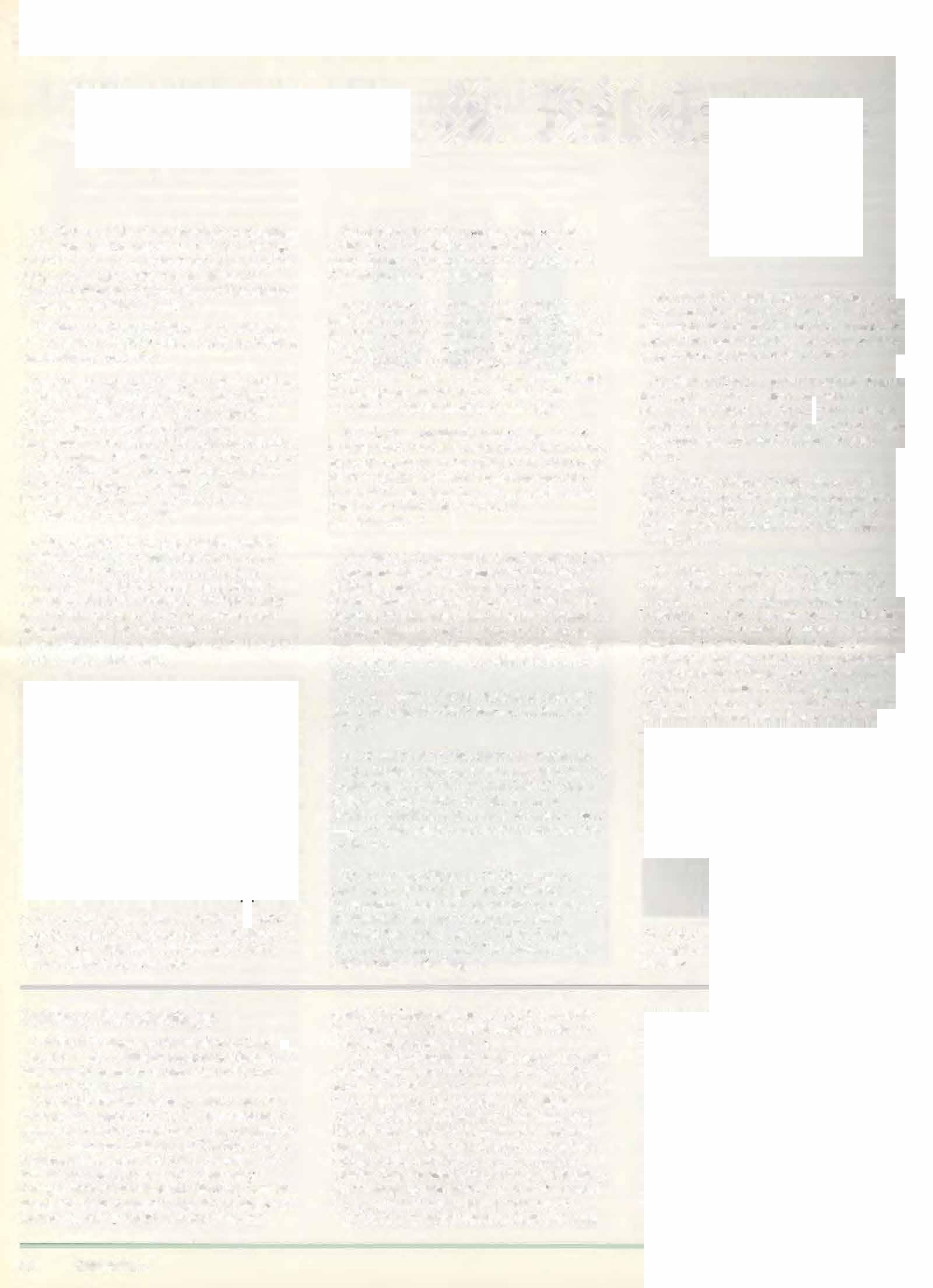 Leslie G. Herr. lireredpimt ofthe 1984 £1 sea l'ri�e in Para,\itulog_r anti Dr. Carl E. Ku·kparri('k (/e/1) and ft./J: Richard B. Sh(JI-e/,\{}n, EVSCO Plwrmaauticuls repre,·emari1·e.
Leslie G. Herr. lireredpimt ofthe 1984 £1 sea l'ri�e in Para,\itulog_r anti Dr. Carl E. Ku·kparri('k (/e/1) and ft./J: Richard B. Sh(JI-e/,\{}n, EVSCO Plwrmaauticuls repre,·emari1·e.
10 Bellwether
�
Or. Jack t\no�ll"S (\ ·38) and lw. \\if� Caroline. \\ere katurcu on the from �o<)\er ol .\olllltt'rn Bcullinl!,. <.1 monthl� maga7ine. Dr. Kno\\lc-, i'> !>hO\\n \leering a Ri\a 2000 off to Brmrni.
ALPO Pet Food!> Inc. contribut�d $1.000 to pun:ha-.e a po10t�r. podium, microphone and a proJector lor the teachmg 'cminar r\)Offim \ lll1P. Thc -.�cond �car clil�� pre�entcd an ..t\\;trd tc1r tcachrng e'cellencc to the Para,ttolog)
L.tboratnn. llnnnred \\en: Dr. Ja) f-arrell, Or. Colin John,lone, Dr. Carl Kirkpatr ck (\'1H). Or. .fame\l.ok. and Mr. Derek Munce}.
Or. Wa) nc II. Ri!>�r. emeritu� tl!'>earch proth...or of putholug�. recentI) authored 1/w J)og: Ill\ Im wtl Bwlm:.lt al ,\/a/..eup wul lt\ Ut·lmiom/up Jo Onboprwtlt< l>twliW\. The 'olume ''"'' publt,hcd JOtntl� h) \I PO Pet Food,, Inc and th� \mencan 1\nimal llthpital ·\'-'l)<.:i.ltion. h wa' Jl' ..tllhutcd to all \etc:rinarian' \\hn .u-c 'mall an1mal prac.:ltlloncr� through the: 1\l PO Pet Food C�nte1. Thl. hooU.:t i" availabk t(\ the public; p!t:a'c \\file 1\LPO Pet Food (enter. PO. Bux 21t!7. Allcntm,n. 1'1\ IXOOt.
Or. Anthon�· M. Stefan�IU (\"36) rcccl\cd the Lotu:-.iana \etennar� Medical A-....ucwtlnn Ccrttficutc nli\pprcciation "for ht' 'enwe "'' c.-.ecuti\l� 'cl�tan lunhenng gnmth and dc,t:lopmcnt ol the "'''ocianon; lm 1.'\tcn...hc.: cllnrt' w cradrcatc and comrol h\l.''toc� Ul\t.:a-.c... through hh man� �car-. m the practice ul \Cicnnar� mcdrcinc ·· Dr. Stdan-.1-.t \\01 f..cd lor the l.S O�:partnlent of Agricultun.: fmm 19J6 until 1973. \\hen he: rctin.:d. He nm\ li\c' in Crowley. I A.
rhc l>ng \\I iter\ [ducattonal ItU\( named a 'LhoJ.u,fttp .rlt1.1 Dr. Richurd Caet/ f\ '.l5), on�. ut the IrtJ\1\ mn't c:on�i,tcnt �11pporll!l" lk Gact7 ic,.: an ,\KC lu:cn...ed judge of all '>pnrung dog' and of ...omc terrier brccJ,
Dr. Robert l. Davieo;. Bcnjum111 h<tnl-.ltn Pmtes..ot nf Molecular Biolng) and lJnivcn..it) Profc),OI. <Htcndcd a \\Orl-.'ihop at the �ASAAme... Rcw�uch Cente1. Palo Alto. C to \Hitc a hool-. on c\obrolog� in earth orbrt to�ethcr "ith otherc:o11111butt.m•. Dr. Oa\tC\ lw' been imatcd to prc,cm a pap�.:r un Pan,pcrmia at thc 14th lmcrnauunul Rt:\ II!\\ \llecung nn (ommunicauon \\lth [�tratcllc,trial Intelligence. I he meeting t.af..e., plm:l' Junng the 36th Annu.tl Congrc"-; of the lntl!rnuttonal Aeronautical Federation 10 be held in Stoc.:f..holm. Octohcr 7 LO 12. 19�5
Dr. Joan ll�ndricks (\'"79). as....istant pmlc,s<Jr of mcdic•nc. ptc:,cmcd an ab...tract at the meeting ofntc h·dcr.Hton lor Amcru:an �(Kiellc.:-. nl [xpcnment.tl Btolog} tn pnl at \uahcim. C ·\.
MemorialProgram
For :.cveral years. there has been a memorial program at the School of Vetennary Mcd1cinc. It i� an I MEMORIAM for euthant7ed animals and 1s for the benefit of the Vctennar) Ho-,pitaJ of thl! Umvcrl>ity of Pennsylvania. This year \\e ha'c revi�ed it slight!) to alto'"' for more \Videspread participation
Euthana'Ia of a companion animal. even when it is clearl) the moM humane course, 1s often a painful experience for both owner and veterinarian. As a consequence.� would like to counterbalance this with a po!.itivc effort.
,\far/.. f). c\w1 ren•il·t�\· 1he P/t:er H'holar,ftit' /mm /)I'an \fan/w/,.
\lark D. L�er. a �enior l>tudcnt. n:c.:ci\ei.J a S500 'chol,u·,hlp and a plaque lrorn the o\g1 ilullural Dl\i\tOn of Pfi1er. Inc.
The l,oultry l nit at .....:e\\ Bailon Center ha-.. recci\cd lumh for the construction of an tnlecuous di.,casc comarnrncm building for the �tudy of di-.eaw-. nf a\'ian and other �nccic-..
Or. \drian Morrison. profe-...or of anatllmy. dcli,c:rcd thL Tarbox Di.,tingubhcd 'euro,cienll!>l l ccture at Te�a... rech l ni\Cr\ll). Ik al....o coedited a houJ.. on Bruin tft•< lumt'm' o/5/c•t•p. and participated Ut'}mpu�ta on a numbL·r uf topics: Suddt.·n lnlant Oeath Syndwme. "lama 'v1onica.

C<\. :\curunul and Endogenou� Chemical Control Mcchani...nh of Emntion:,tl Beha\10r. htknol-.a. Japan: 25th Ann1vcr.,ary Sympo�ium un the \lcuroph\''olngy of Sleep. Sleep Rc��.·arch ociet) meeting. Seattle He lectured at (htord Unavcrstt�. [ngland \1.tiK l.tnt.h ln..,tlllll" for Ht;'ln Re'-l.<.llch '\1jm�:gcn Uni\er\11). Uni\Ct\ll) of Bologna: l niH!r,it) of Parma. and l nl\er..it} of S1ena
The \nimal Rescue League of Philadelphia c.:ontnbutcd S500 to the \\ ildlife �en icc at the School lor ne\\ c4utpmem.
Or. Victoria L. Voith. as�i�tant prole��or ol medicine:. pre�ented a paper entitled Anolnis (?!' ],50() !Ncphmw Culls ahcJLt/ Behm·iur Pmhlem\o/ /)(}!{,\ one/ Cttl,, at the Animal 13cha\ior SociCl)' Mccung in Raleigh. '\C, in June. Eli1abeth A. \1cCra,e. research Cb�tlotant. al.,o pa1tic1pated in the confcrenct:". he presented a paper. Corrl'lllft'jj of\l•ptmuion Anxit'fl in rht' On){,

Dr IC)hn B. Madison. (V'81) and Dr. Robert H. Whitlock. profe��or of medic1ne ami Chwf ol Medrcal Services at New Bolton Center. received a grant from the Board of the UnivcNty of Pennsylvania Research Foundation for their propo,al "[\aluation of E.xtrin'>ic i\cural and llumornl Controls of Aboma..al Mouht)."
Mr\. Joan Ferguson Pe\\, a member of the School\ Board of Q,erscer.... hcc. hecn elected a� the fir...t ,.,oman president ot the �tnional A' C)Ctallon or State Racing Commi....�lom:rs. Mr..,. Pew. fur several years. ha· been a mcmhl'r of the Hor'ic Rnc1ng Commis-.ion of Penn')lvania.
four rc..earchers at the School recc.:l\cd funds from Penn\ ne\' tmernal re�carch lund: Drs. .Joan C Hendrie&.\ (\'"79) and Joan 8.O'Br i en (\''63) for " 'Jeep and Breathtng Pattern� Durin!,! Dc.:\clopmt:m tn Pup "ith a �pontanc<lu� pper Arrwa) Ob�truction": Dr. Gail K. Smith (V'7-') for "Irip 0) plas1a. BiomcchanicuJ Corrclallon� and Radio�rnph1c: Or. M. Raja Iyengar for "Rcacm ll), Energetics. and Phy,iulogical Role of -Pho�>pocrcatinine: A Newly ldcnttficd Phosphagen tn Mu'>cle."

1 h1. -\g.r rcultu1e Resean;h tonumuccuf the �tate of Pcnn,)hania ha<., apprO\cd a numhcr of rc'catch proJect!> for funding at tht: chool. They arc: Pwudorabie!> Virus Infection of S\\lnc: Molecular [ptdemiology and e\' Approaches to Anal)'b t)f Latent fnfecuon; lransrnl\!>ion and Significance of Bovine Leuf..emia Virus Infection: 1 he Rclation...hip of Hemoglobin lypc� and . ll'>c.:�ptabilll)' ofSheep to Para..itc lnfcctinn; Effect nf Protein Degradibtlit) and L-.trou!) DcteCtl<.ln on Oai� Reproduction.
'I-'• , �- .- � ,..,,-.,....n.:...,•�•"oaca
Therefore, the School ha� sent 11 graduates po.tagc-paid envelopes which pro,ide the veterinarian with the option of making a memorial gift for an euthani7cd pet or sugg�ting that the owner ·end one. In either Cll\C. upon receipt of the contribution. both the veterinarian and the client recetve an acknowledgement from the Vetcrtnary Hospital.
Tho.,c ''ho have particrpated m thi· program ha\e indtcated the following benefit�:
I. The diem recognizes this as a personal gcsture ot concern.
2. Buth the client and the veterinarian have the opportunity to support animal health research.
rhe puolic '>CI'\tee �pOll> lcatunng \-lA � AND \ JMAt.S: l h ing, \\orking and ( hanging Together. the exhibit at the l nl\cro;rt� Mu,eum. \\On a �tl\cr medal and a gold met.lal at the recent CASF compctitinn. One \(101 fc:aturcd an Ahys,inran kitten \i'>iting the c\hibit at night. The other '>POl leatured actor... lrom the mu!>ical CATS 'i'lting therr ancestor.... Both .,pot� are pupular ''ith tele\ ision \·icwcrs and have brought many "''tor' to the e:<htb&t
3. The relatioru.hip bctwel!n the cl1ent and the veterinarian is strengthened. and one is formed between the owner and the School of Veterinary Medicine. Funher �upport for our work may take place over a period of time. thu� promoting '-'Ctennary education.
\\b bche\e the pet owner will .apprec1ate thb thoughtfulne�s and be comforted kno\\tng that the memory of that anuna1 will perpetuate ammal health care and medical <;tudies. And a gift will have been made to help �ustain the Univer�it} of Pennsylvania'S position in \Cterinary medicine. Summer
1985 11
Alumni Day 1985
More than 250 alumni and gucl>l� rcturne<.J to New Bolton Center on May I� to participate in cla'l> rcunionl> and to renew old fricnd,hipl>. Carnage ride� were offered, Lourl> of "lev. Bolton Center \\CI"C n\ailable and e\cryonc gathered for a buffet luncheon. In the e\ening the action moved to th..- Wilmington Hilton Hotd for a night of dintng and dancing.
Cla.1�uf19.'i0
Clan u/1970
Veterinary Medical AlumniSociety
VeterinaC} Alumni Award of Merit Rec1p1cnt� were honored during Alumni Day 1985. Theawards \\trre presented by Dr. Susan McDonough (V'68). cochairman of the Veterinary Medical Alumni Society AwclfdsCommittee.


Dr.
E. lf'hllt•heacl0'51)reai\·m th<•award. i!terinurt Medil'ofAfumniS<Jciett

nr. Wilham Hartl1:Jr.(I '1!6)(W/t),om.�cin.• pn•11dmtoftil� J,MAShanJ1 tilt'.t:uwlttJ Dr. Dt117dA A.lt'lrJII(J-'54).thrIll'"prr.\lclt·moj tilt'.wdNI.
Dr.
II' RaJ,;t., (I�!).thl!dtatrman}t�t lt•tC'f'IIWTI ·llwnniAmwol Gil·ingfhr 19115 86
Dr.
J. Craig(1''55)(/t:/t).flw\'tc·t'pr�•.,iclelll u/tlte �eterinort•MedicalA/w)miSodrtl'ami DrLa11n·nct'Son1o(V'57)1!11JOI aqwetrhut
Drand Mr!.. l.vaelUw•(V34)(le{l)andDr. cJntl Mrs. Rul1l'rl Slwmer(�34)(right).
Dr. Mark Allam (V'Jl)instruC'f.t Dr. Daryl Biery on theproperml'/hocbofc-arriagetlrivmf(at alumniandtlu:tr{amilie.�fOlDed Nt'" Bolton Ct•lllt•r.
Alummdinedandtlom:ed11Y.'//intothem�:ltt
CltmoJ/9J5-50th Rl!union
C/o.uof1940 12 Bellwether
Dr. A.J. RO.\t'tlherg. Dr. Harold &mtem, Dr. AmmStull$. Dr. BonarclKlausmon. Dr. R.L Booth.
Dr. Georgt·uwit Hartenstem Ill(VliO)"'''t'tl't'.� the0\IOTU.
Dr. VirtorA. Mmgheui(Vll5)ispff'senteclthe award.
Dt. ��� Horkl'T Rllodt's(V'55)rec-etW,\theUllorc/.
/)r. Arlhur Richartll.Jr. (I't/9)llprc•.,niiNitheaward.
Juhn
Dr. A Clew·landBro11n(I"'59)pff'l('f1htlwreunion )l'Urf.f!ft./mm tlw Classof19.'UJ.
Churb
Pt'tl!r
Commencement
Commencement exercises for the IOOth graduating clasl> were held on Ma} 20. 1985 at the Zellerbach Theatre. The Commencement Address was given by David E. Rogers. M.D.• president of the Roben Wood Johnson Foundation and a member of the School's Board of Overseers. Dean Robert Marshak then presented the diplomas to 105 members of the Class of 1985:
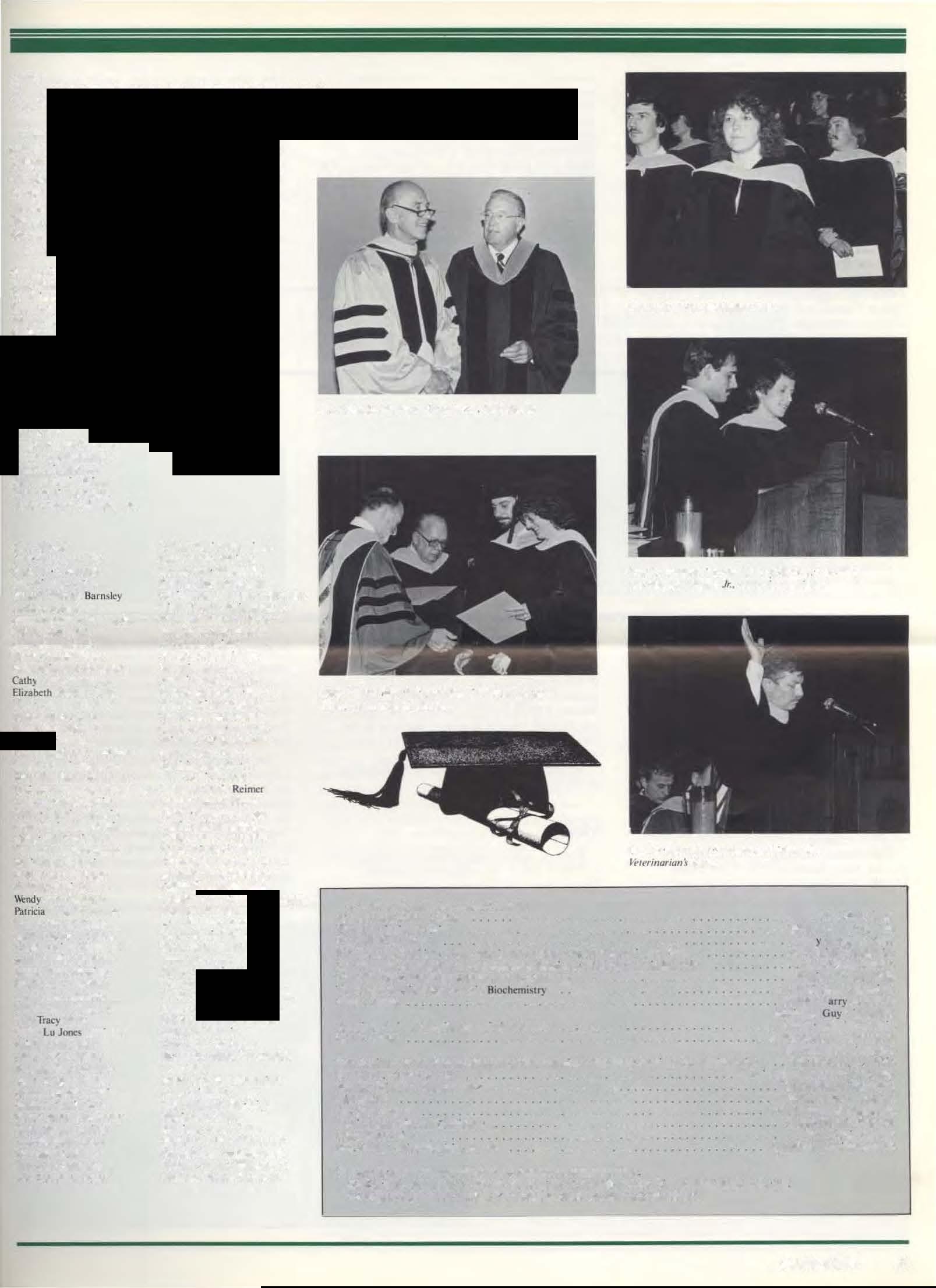
Graduating with Honors were

SwnmoCumLoutle
Beb} Margaret Allen
Er1c Mitchell Arion
EdwardJoseph Kochin
Michael Robert Pttronto
Ferdinand GU)' Vhintaiocr
\f�naCumLoutle
Helen Ehr.tbeth Campbell
Cath} Ann Catanzaro
ChrlSlopher La�rence M;Cawk
JamesAlexander Thomson
Todd RIChard\�)bnght
Cumf.Autk
Joseph Fronci\ Oak>. Jr.
lauren Ka} Mauarelli
�Curti\ Rahton
Johanna Mane Re1mcr
Su-.an Mane Stehrn;�n
H:�rlanCooper Wilham,. Jr.


Classor 1985
Bet�� Marg:.tret Allen
SwnLe\\i�An!>tadt
EricMitchell Anon
Kennl!th Harold rn
Barbara 1-crn Barow
Jame� Frederc!.. Barton. Jr.
Raben Alan Biall
Juha Marcy Block
KarenCacce�e Bnsl..c:
HelenEI11.abeth Camphell
Catb\ Ann Catanzaro
beth Robert' Clarl..
MarkAnthonyCofone
Meryl HopeCohen
.leffre} John Conrad
Mehnda Co:ogro�e
Da\id Bradford CrutchfJCid
Joseph Franc1s Dalo. Jr.
Diane Elizabeth Dclmonic<l
Chn:.tina Anasta�i.l Ooughcr1)
Carla Ktm Oro/.dOWICl
Sbelle) Robbnu Ep�tcm
MaryP..ttnceEno-Me.e�
Jc:ffre} MarkFemman
ThomasJoserh Fergu,on
Dav1d John Ferrar•
Barbara Jo Fl ckinger
Caroline ManeFlower
ndvAnn Freeman
Pat cia Fon.ythe Canon
SamuelJoseph Geller
SheldonLarryGold�tein
Charles Ph•lhpHable.II
Anne Deffncr Hallo\\cll
Jeanne MerleHcrr•ntt
Erich Coder Hoffman
Kath} JeM Horlman
Donna L}nne Hughes
JuliaTroC\Hunt
Kath) Jam•.,on
Shtrle)·\nn Jeffers
�arl 1\rthur John\on
Grotf� Brad Kardon
Bru� Oougla� Khnk
Ed�ard Jo!>eph Koch1n
Kathleen Maru! Kral
Ste\'l:n M chael Kuhlman
Bruce E.dv.ard Ltudig
Jean Margery Las,cr
Lisa ElknLa�haw
Sue Ann Lauerman
AvaCon!itancc Lognn
Ruben Oa\td Macm.t\an
JohnStanley MaJcher
l.auren Ka) MauareJij
Ooroth) Rae McAdams
Chmtophcr Lawrence McCawley
R1chnrd John Memersmann
Georg;: Richard Melillo. Jr.
Jacqueline Ann Metzler
F. ThomasMtller

Slt'\en Lc,le M•lhken
Georg.a [lien Mole!.
Pntric•a Ann Morgan
Roben Allan Mov.da). Jr.
Gc:ne\a Dmne Murray
Scou Ra}mond Palmer

Grego11 Henl) Pl!tcnon
Mtehad Robert Petranro
Su..an Marie Pratti,
Pntncm Jane PrO\ost
NealCurl!� Ralston
Johanna Mane Rcuner
R<andalJamc:!> Rieder
Cro'b) Nev.bold Roper
Oir.'ad 1\eil Ro�nberg
Arline ClaireRosenfeld
Carole Lmda D. Ross
Charles Edward Rupprecht
Kenneth KcnjiSadanaga
Curtb George Schelling
Eli11abcth Wood Smith Sinnigen
Ronald John Stas
Lynn Emmet Steadman
Su!>an Mane Stehman
Scott Andrew Stekler
Rachael S�ann
Teresa Jo�cphme S)lvma
Gregor} Man Tb1bodeau
Robr.:n MelvinThompson, Jr.
JaffiC'AJc.xandcr lllomson
M chael Edv.ardTom�ic
Rcbl:c4<!TomMie
Gary Paul \!an OyJ.:e

K)mberl) V10let VanOrsdell
f-eh.x Vetm
f-erdinand Gu) Vi�inta1oer
Cot) \\-11li.am:. Vo!b
Todd R chard Wa)bnght
Martt lne1 \\l!bcr
MomqueYveue \\\!Us
SuLo.�nne Calder Whitehead
Cynthia Lyn Willard-Mack
HarlanCooper Withams.Jr.
Wilham Heaton Yerkes, IV
Anumber of graduate� rccei,cd awanh:
The leunard Pear,on Pritc:

The J.B. ltpptncou Pnt\'
The19.\0Cia�� J>rile
Churlu
The \\bi'Jlen\ Aux1lw.r tnthe:ArneltC<Jn Veterinary Medical As!>OCiation Pmc
TheWomen\ Aull.tlwry tntil\-1\:nn,ytvania\'ctennal') Medical �ocaa11on Pruc:
The 1956Cia�� MedalCorAcllle\'erncnt in P..tthoklg)
TheJame�Ha1lllt JOM, P111c 10 Bioch
A"ard
Juha li"...C) llunt Ed"ard Jo.,c:ph Kochin . lkh· Margaret Allen Carla K•m Orozdowlcl Seal Curti.. Ral,ton
• Mon14ue Yveue\\t:ll,
• Todd Richard \\Uybnght Shddon Iarr. Gold�tein rerdlnand GU} V�SinUliner
Sheik:) Robhm.. Ep�tem Mere� Aw:ard
Amcncan Ammal Uo\ptalA"·ocsauonAward
HarlanCooper Wtlliams. Jr. Helen Eli1Jlbetb CampbeU
A"nciiltron Prue . Edv.ard Jo:.c:ph Kochm George M l'almct A�ard

The Auli.Jhal)to the StudentChapterofTheAmencanVeterinar)
Chn,coph�.:rLa�renee McCav.le} SCheid} PruefurPharrnal·olog)
Richard Waybright H1ll Award
PhiZeta 1\�Aard
[\'enng
Jol>Cph Fcrg
Charlc., Edward Rupprecht
Mt•mher.,·oftlwxrmluttliiiJ:du,1.1.
Dr. Dul'idC. Ru�ownumlChc�rl<'l.\ Ill>//(r�i!lll}.
Dm:t/oll'tt·:.pt\•.1/tlrmoftilt' Cfa11 of1985. andGt•VtJWML'Iillu. .. du.1.1 \'tl't'prt•.lldt•llt.
Dean Rubert \lanflaJ..umlA.IW<tUit'Ot!unJull'ph Skdl.-a·pr<•wmtht•thpll>ll/0\.
Dr. Lo11rent'f!/lutelnmu11admim.ltt!fl"TJw ttmnoran Oath.
•••.•.•••.. •.
.• • . •. . • . •
.••••••.•.. ••••••••
• .•..••.•
....•
...•.. _.. ..• _
_ • ...••..•..•. .••..•
Xic:nta
• ••• • ...•••
••• ...• ...• ..•..•..•. .
M!!dJcal
• .• ••• , • • •.• . • .
• ..•
••.••.•• _ . 1hoo\al>
u'-Un
Todd
• •.• _ .•• . • • • . •. .
a
lor
KIC(.-n
. • •• •__• •• • . , • •. .•• . • .• Neal
El
m
A\\arti C)nthia
Two
Juring the commencement Dr On\td R. Kov.ak:yk(\'7.5) wa� the reciptcnt of
�rdcn
Dr
Summer 1985 13
h
m Pruc
C�rtf•uloau Jo�h Franc•� Dao,Jr
Lccn Pntc
Curtl\ Ral,ton
Stubb� A\.tan Mt:d�e:
c
L}n Wtllnrd-Mack
facull> member; "ere al\o honttred
the 1985
Dl.,tingui\hcd JcachlT Av.ard
Eugene Iigcnmann rec:ciwt.l th� Beecham A"nrd for Re.'IC'MCh Excellence.
ATrip to China
\.ltlk. a '>taplc tood here. ,., available tu Chinese d11ldrcn only it the} arc eight )car or )Olinger. Ihe rca!)on: dair) farms ure fe\\ and far between. "China j., nm\ tr) ing 10attract foretgn investors tor a mullltudc of projecb.." o;aid Dr. Davtd T. Galligan ( V'K I) ·•Among them are the c�tablishmcnt of daif) herd!�. to meet the demand for milk and datry products:· Or. Galligan the lteld rcprcsentattve for the Nutritional Setvtce al ;\e\\ Bohon Center. accompnnted potc:nllal tn\·c,tors on a tt ip to Chin<� tn Januaf} to look at dair) farming there and to dctermtne the: ka'>ibtlity of 111\e'iting in datr) herd!�. "We vtsited Tl>ing Dau, which b on the coast. and lxiun. in central Chtna.'' !)aid Dr. Galligan. .., wus brought .1long to e\aluatc: the economic feasibilit\ of c-.tabl�hing a datf) herd. to check the tc�:d available. and to investigate herd management
GroundBreaking
Ground brcaktng ccrcmontc· for the nC\'intensi\e care-neonatal unn at NC\\ Bnl ton were held May 22 'outh of the C. Mahlon Kltnc Orthopedic and Rehabilitation Center at "'c\\ Bolton.
The building. to be erected on thi!. !'lite. \\a!> made posstblc by a gencrou� gift from the Connelly foundation This neonatal unit. to be part of the butlding was made ro-:.stble b� the generous :.upport of Mr-.. Annc French Thnrtngton.
Otht..-r maJOr donor· are Mr . A.C Randolph. Upperville. \A, M r . Miles Valentine. Uniomille. PA. and Mr. and Mrs. Peter G. Gerr) Princeton. NJ.

GoodBye
Student' and faculty at II UP said "Good B)c" to imem!> and re�idenb during a "-;end-orr· ccremon). complete ''ith ,kih featunng Jamie Quuckenbu..,h and Robert Or!)her \'.M. D (V'79) as media pct'tonaliti�
Mio;;sed ''ttl be the intern!) Donna Blasko
D.V.M .. Eli�etbcth Hamilton V.M.D. (V1!4).
Molly Hernng V M D (\"83). Elizabeth Leech
D.V. M .. Robcn Mtlikcn D.\. \11. and Da\c W1lke
D.V.M
Clayton Ktlrain D.V.M.. L Kay Ma-.on D.V.M. and Anne �orton D.V.M. \\ill remain at the .,chool a<;, restdcnb.
The folio\\tng completed tC!I.tdencie-. at the School: :vtary Walter D.V.M.. Lynn Multi/
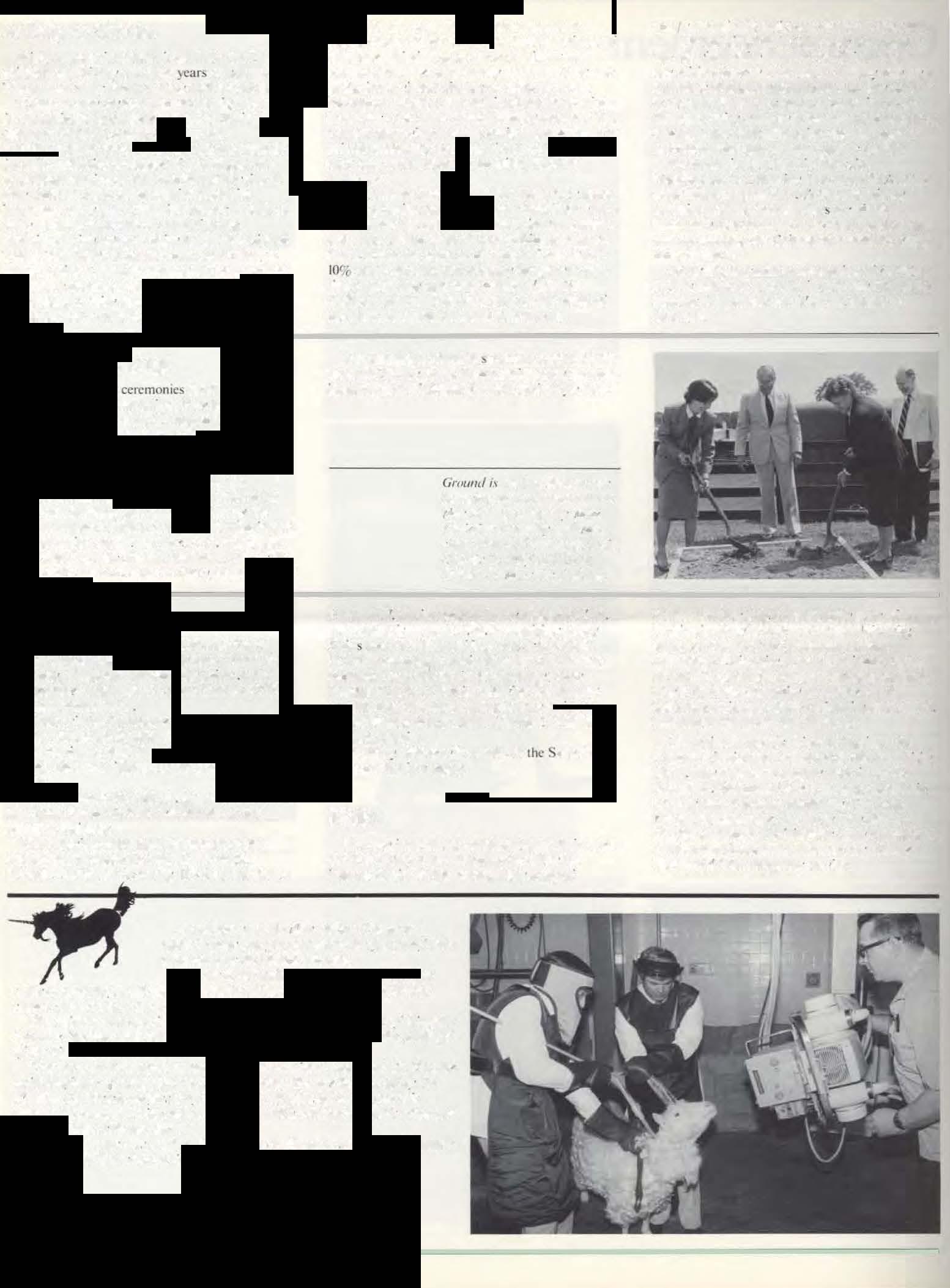
D.V.M.. Jonathan McAnullj D.V. M.. and Steve
practiccl>... Or. Gal ligan and his compunionllo n:..ited sl.'vcral duiry farm.... fhe herd' com.t::.ted ol Hobtein.... Mtlktng at the farm'> whtch \\ere: cooperati\e... wa' done mo...tl) by hand Onl) one orthe larms \ tsi ted dtd have a milking rarlor. Preventive medicine was mimmal and most ol the !arm!. \\Ctc not under a herd health prOM-ram. �The Chinese :m. lrj tng to make raptd improH·menh in ammal hu,bundry." he '>aid... rhey .trc eager to learn aud to usc method... practiced in other coumric,."
Dr. Galligan took a computer along to 1..'\aluatc f�eding prac.:ttcc-. and ked co�t:.. "The fel.'d., \\ere a on different.'' he ...aid -co"' \\ere led bean !>talk� and !>WCcl potato vine�" The: nutrittonal '<tlue of th h. i!) about the same a:- the value ol hay. about crude protein The primar) forage \\a� corn �tlage. gra.....,h<J� and b.;an �tall-'). \\hen Dr. Galligan cumparcd lhe fcc:d costs to the \alue ol the milk produced. he found that the Iced
The building j.., the fir-.t .tructur� funded by the Second Ccntur) Fund. It \\a:. Je:.tgncd b) the archttcctural firm 111 Bohlin Pcmell Larktn C"v\\in:.ki. (Jflllllttlt\ hrokt'll.lor tlte 11£'11 illl<'ll\ii'L' care-m·mwtalttllit m \t•ll !Jolto/1 Celllr'r h1 \li.'·' ('hmune (mmt•llt and \ln. ,.tmu· Ft·t•nc-11 771uringtwl 11/ult• C'lwrft•, .\. 11(,1/ and Dean Nohert R. \JanhaA look on
f mm� D.\ M .• tn )Urger�: L<m) Sic:glcr 0.\.\1 .md Al.sn K 11 ma)er D.V M in medt�tnc. Larr)
G;un burg D.V.M. and Tony DeOu lo V.M.D. (V'R2) in neurology: Kc\ln Shanle) D.V.M. and Richard Long D.V.M. ,n dermatolog): Am� Marder \'. M D. (\''79) tn heha\ tor.Dr. Marder W<b the lirllot rc�ident in animal beha\ior tn the United States: Mary Loui!'c Martin D.V.M. in medical gcneuc.:,. Dr. Mar\ Walter ''ill r�main at the . chool a' an in!.tructc>r tn 'urger).
Hello
The nc\\ tntcms and re'idcm... began thetr \\ork ut \' HUP .lui) t. We '"clc ome the folio" ing tntcrn.,: Kcv1n W. Bis\Oncttc. Uni,cr:.ity ol
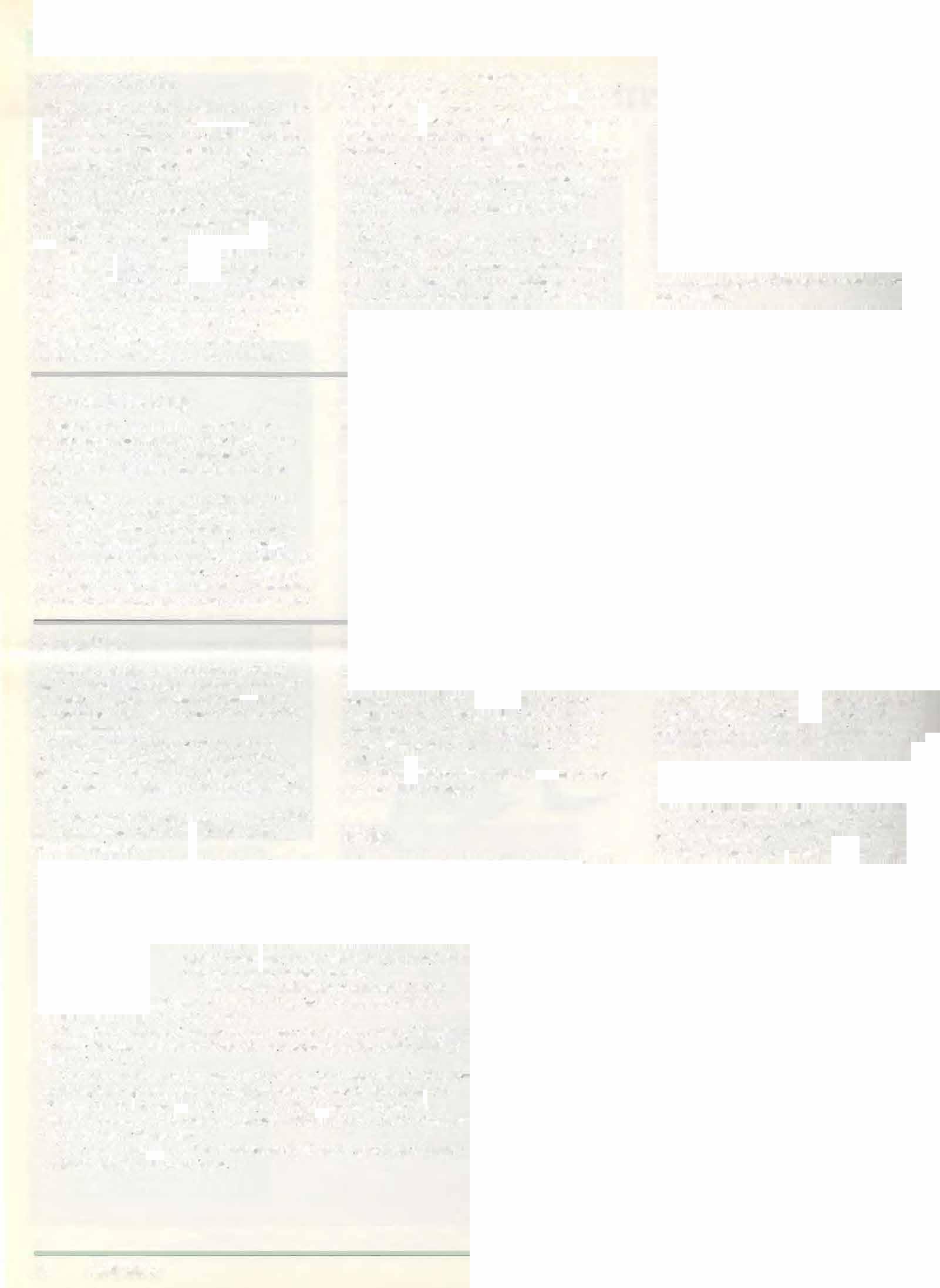
--1 U11ic-(Jrl1 t Otllt' ro \eu HCIIfcJII Cemc•r otic nigh! in Jla_t. 1101 ji1r trNIIIIIt'llf, htlf /or proof that it indeed \I'll.\ tltejthled ('t'eature. It let it.,ellhe radio�rapltt•tl mul c'Xtll11111t'cl tu ,tJem t! onn• and/or all thow who had daimed 11.' horn u·m not n•al om/ tau\etl �rl'flf pain ''' tlu• while aninwl.
The wm·orn cmtl \'l'lt•rllwriom nwt the prt'·'' in lht• n•mc•r rinJ!, o/ Rmgling Brother, Barnum and Bailt:l' Circu.� the 1/l'l:f nwminJ!, fO report tltefindings of the IIIJ;!III\ 1wr/...
..J11e hom '�'(/11 imegral. Itaturoi JJOrl olrlw ammo/." reported Dr. Clwrle' Reul. prok,wr ofracliolot:1. "It i.\ .Hillgro11·ing. fit• ll'il\ hac/..t•cl uph1 Dr. II illiam Duna11 itk. pro/l'''ur ulHll'f.!l'rt. ''I am pl£•owcl 10 tefl wu 1111� animal iv a comem. lil'lllg unh·vm. ··he \tnd ..,�a unicorn. Thw :, ll'hm you m/1 w1 anima/ 11 ith one hom. ..
The comrm·c•n_t ll'a\ willed. the tminwn nmtintte' to VJreatl t'IIC lwmmellf wull!r thl! 8i�: !i1p ,,Jwrt'\'t•r11 gm·'·
CO!.t \Uiuc o( milk ratto "a� ,jmilat to that here. H� C'\plamed thut ( hina rna) be u market tor Amt:t tcan datr) 'itOck ..The Chtnc'>�o: are ad\CMNng l()r co"':· h�.: -.uid ··,\tn:ad\ the) o\\n a numbt.:t ol bull :-.eml.'n Mation-. and the) do \\ant to incrt:a'c their dait") herd�." Accordtng to Dr. GaUigan. dati) collecti\e� are being cncoural!c:d to de,elop n fn:c: cmerpri...e !lptrit and an.· urged w incrca'c production to make greatct proftt:>.
·•tt WU!> an mtt:re!>ting tnp." he '><lid. .'\griculturc in China tmolve!>aboutKO(', olthc population compared tuV( here. Yctcnn<tr) mcdictne and modern method in .mtm;.tl hu!->bandt) can do much to incrcaw production and \\e can hdp thl.' ( hllll.'�e to C!>tablt.,h a \ iabk dairy indu,try."
Dr. G.tlligan \\Orb in thl Scctwn nl :\utrition at �e\\ Bolton Center and 1:- current!) Jini.,hang a \la!->ter' Program at th� \\harton Schnt'l ol Businc-.....
California. Da,id D C�mton. Unhcr,it� (ll Caltlurma. Teresit.s Carro. PurdUl' ltll\l..r,H). Mark A. Cofonc (V'85)•.hmathan Elliott. Cambridgr Unm:Nt). Karen L.Gtb,on. ·�e.xas A and M. Carlol> C. Hodge�. Tu!>f..l!gce ln!>titutc. Oa\id E. Holt. lmi\eNt) of Sidnc�. Jill E. Sackman. Mtchigan �late Unt\Cf!)ll�. :Jnd Jane C Schroeder. lfni\(:r-.it� of California.
The re'ldents are Dr. Rtchard �qutrc'>. Dr. Cia)ton " tlnun and Or. Richard Hill in mL-dtctne: Dr. L K.tt) \-Ja,on in ...urger�. c;oft tMue� Dr. Rus�cll H Patterson (\'1(-t). �urger}. orthopedtc: Dr. Lot raine DeJager. cnrdiolog): Dr. \nne �Orton. dcrm,llolo_g): Dr. Ret!.) Da� rcii-Hart (\''83). nl'urology: Or. ftmolh} GrO\e-.. mdiolog�: Dr. Barbara Chapman. bcha\'ior: Dt. Dcnnb Burkett (\ 1<4) emergcm:) sentee.
14 Bellwether
Botulism, thesilentkiller
ltll/linut'd /rom pagt! J
matntains \trt�l conirol on ''ho use' the \'accine. Farm manager:. c.tntl hor:.c o''ncr"J> in that state an: re4uircd to :.ign a waiH:r absolving Kentud.) !rom any re:.ponsibilitics !>hould complications dc,·eJop Dr. Whitlock feels the \a<:dnc i-. safe and that ih U'il: would pn:\ent the di�ea'>e in the highest n�� group. the foals. "After the initwl three .,hot \ern::.. mares need an annual hoo.,ter to keep up the protection." he said. "Bntuli!>m. like tetanus, r:m produce clinical disease. yet rccmery il. not
SymposiumfortheBiomedical andAgriculturalIndustries
Representatives of 24 biomedical and agricultural compantcs attended the first sympostum held at the School on April 16 on thi.s topic. An 0\crview of the research '"ork at the School wa� given by 28 lacult} member�. The object of the program was to foster relations between the research enterpri e in the School and indU\.lr�. Short papers in medical genetics. oncolog} and virology. development and ml!tabolism. cardiology and hypertension, respiration and sleep. cellular immunolog), epidemiology and parasitology were given to acl!uamt the sympo-.ium participants "' ith the \COpe or work in progress. The program Wa!\ rccei\ed \\ell and the chairmen of the c\ent. Dr. Leon Wei�� and Dr. Kenneth Bovee, hope to organize another such .;ympo:!>ium in 1987.
SheltieSkinSyndrome
Shetland sheepdog clubs from coast to coast have contributed about $5.000 for a ::.tud} of "Shclli�.: Skin Disease" here at the School.
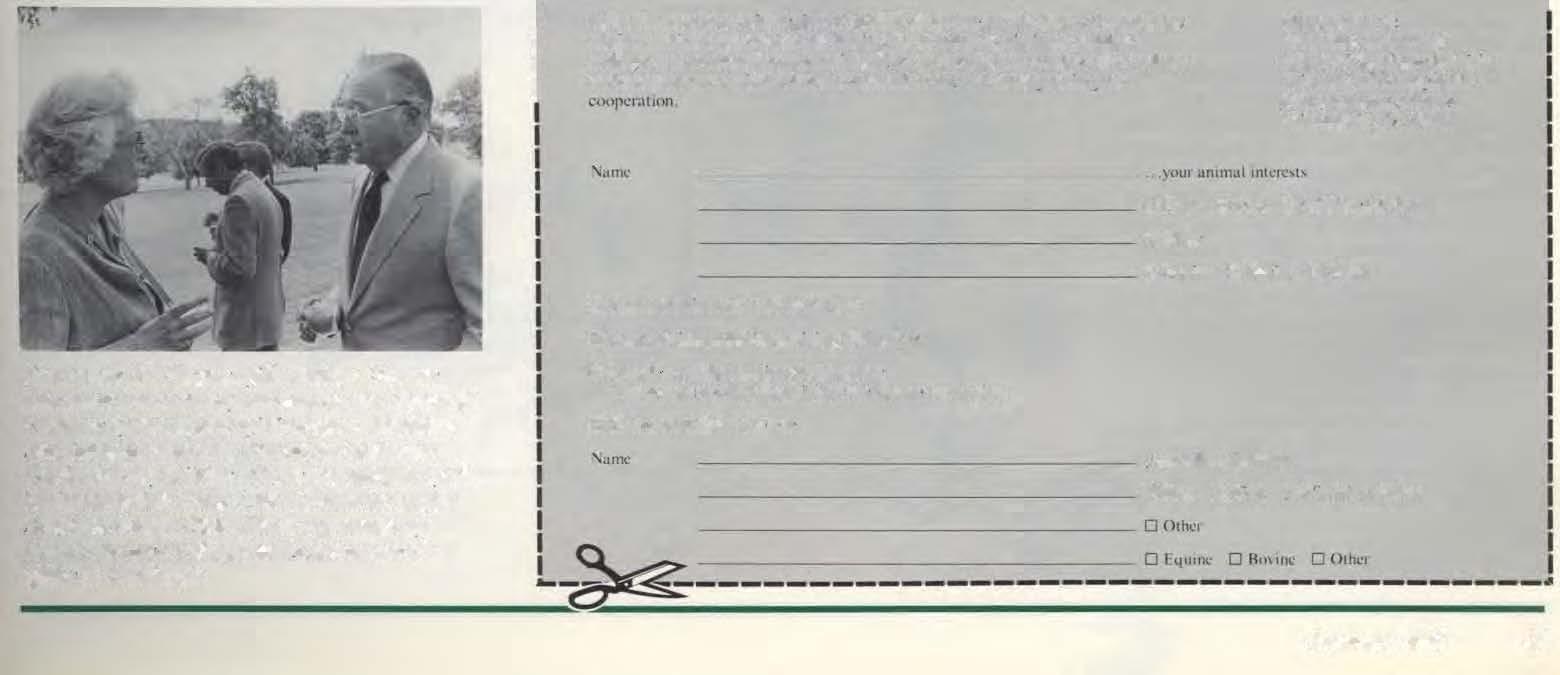
''Shetland !>heepdogs. a:. a breed. have skin condition� \\h1ch have not been diagnosed." satd Dr. William Mtller, Jr., asl>i'>tant profe�sor of dermatology. ·'The.-;e condition� n:all) should not be called "Shdtie Skin Di!>ease", rather the) 'hould be tem1ed Sheltie Skin S)ndrome.
"Sheltic,S, like other breeds. can have skin problems such as mange. ringworm. and conditions caused b) allergies. But frequently they have a condition which still hal> to be identified. The dog has crusty. -;caly patches around the face,
a ·sociated with any irnmunit}. The amount of toxin neces,tuy to cause disease j., '>0 smalL it v.ill not �timulate an antibody response.
Botulism studie!> continue at Nev. Bolton Center. Dr. Whitlock's team is in search of better diagnostic methods and a test \\hich can confirm the presence of the toxin 4uickly as time is of the essence when treating a patient with the db,ease.
Botuli\m i!> a disea!>e of man and an1mals we have to be av.are of.� he said. '·lt is costly and bellcr mean of diagnosis \\ill facilitate earlier treatment. helping to sa\\! lives. While the largest number of patients here are horses. we al!>o see it in other animal!>. Recently we treated a herd of
caule and managed to save some animal!> by giving the horse antitoxin to the cattle. This v.ill on!) \�ark once. If tho e cattle gel botuli::.m again the) cannot be treated in the same manner because of immune rcactiom.." Dr. Whitlock's group recently helped the owner of a pack of hounds which had botulism.

While botulism is of concern in this country. n i') of greater frc4ucoc� in Third World countries \\here it affect:. livestock contributing to the loss of valuable food resources.
The vaccination study at New Bolton Center was funded by the E4uinc Medicine Re�earch Fund at 1\ew Bolton Center. H.W
Mn .fume' H. Higgim vi Sell'icl..le.l. PA . lw., heen elec·tetl fO a rhree-reur temt un 1he Board <?f 01er.wer.\ vf'rlw St'hoo/ of �·e1erinm:r Medicine. \,Jn. lfif{gim. here tl'ilh O•·er.wers Chairman Clwrlel S. IH>It u./ >'c!fA. PA. i.\ the clt!legOI<' u/' rhe Pemhmf..e Welsh Curgi Cluh f!{America to the 4merican Kennel Cluh She is a graduotl! o/' Sarah La11renc e College am/ ;, ucfil•e in dl'it· aj/(Jin in Pimhurgh.
tail and feet and the severity of the disease varies from animal to animaL"
Dr. Miller explained that three major diseases are thought to be the cause of Sheltie Skin Syndrome: lupus. dermatomyosiris and epiJermolysis bullosa. All three have a gross similarity of symptoms and at lirst glance appear to he lhe same disorder. Howeyer. they are different. Epidermolysis bullosa and dermatomyositis occur when the dog is bet\\leen age eight weeks and one year. Manifestation of symptoms varies: some animalsjust show a few crusty. scaly pat<:hes while others have a multitude of sores. Lupus. v,hich has the same ymptom • should appear when the animal is older.
"We want to lind the frequency of Shellie Skin
The Grand Chantpion A ware/ /i'Jr Samu Gt!rmuli.1 ut the Howton Lil'estock Shm• unci Rue/eo wus presemed hy Dean Rohert Munha/... He uml ."-/r,\. Munlw/.. are 'hm\'11 here witlt the '''inning enlrt:
Syndromeand rietermine which riisea'\e \Ve me dealing with." said Dr. Miller. ··we also want to develop a test so that animals can be identified quickly and treatment can be instituted." He explained that dermaLOmyositi� and epidermolysi!:> bullosa are thought to be genetic. 'There is a similar syndrome in the collie which has been proven to be dermatomyositis. In that breed it is a dominant trait with varied expressivity."
Dr. Miller i1> Jooking for severely affected dogs for the �tudy and development of tests. ·'We have some of the funding for the study but lack the animal!> to do the study with," he said. ·'The work is important because if these are genetic disease� the frequency of occurrence can only be controlled through !>elective breeding."
and �turn •t tu u' \loi:thaol. \OUtorvuor
0Plcil�c cont.nu•· to 'end lklloot•fh<'l
0I;�mn111 lniCil,lo.ld In rccc1\1ng Hd/n,•fh•·•
0I 1-eccl\l! mulurk '"P'c'ulLldluc•th••l
1Pk:t,L·..em '" tlw l;ltocl, lwm )"'" /11'1/11•,,,,,,. t:••P•c'J
0Plea'.:'cnJlldl•n•dtt1111.
Plea...: return 1.0 lklhwthcr. Rm•m l90E Schv•ll t�l \'cl<:nnar� Mcd\\:111\: L'nncr,it) of l'enn"lnm1J :>Kth;,uxl Spruce Street' l'h•ladclrh•u. P\ 1911}4
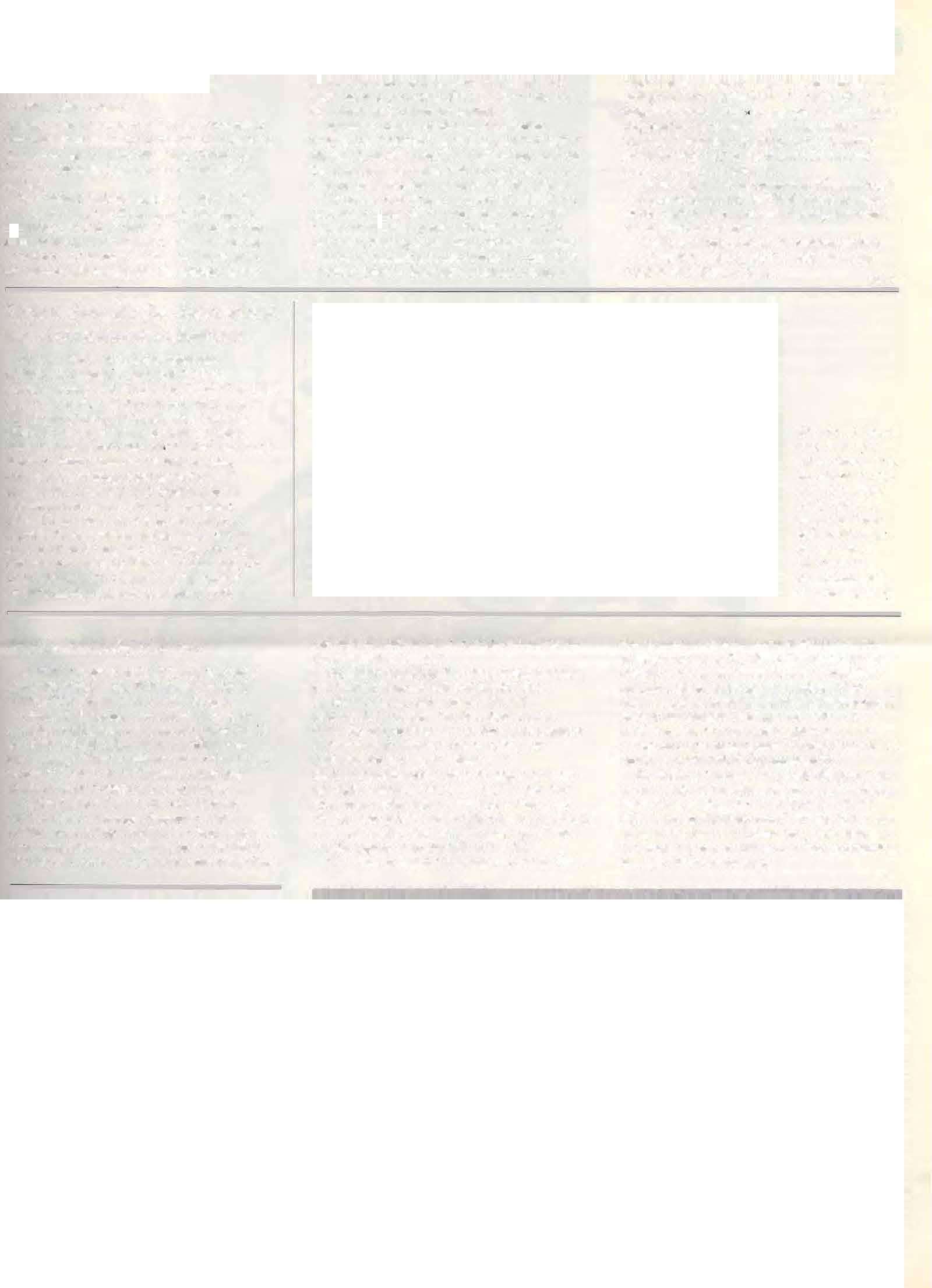
0Pc•g• 0C.:"'' 0\\JIJhk.molz.,.,
0 Oth�
Of-qmn•· OHn\mc OOIIm
\Oilr.mnnuiiOIL:..-L'
.------------------�------------�----------, I I I I llt·tbu·tlll•t llll\1 h<J\<1 cm:ul.111oo ••I 25.1.1{)(1,\\ociH'Co.t\\:t� tlmt 'umc ••I uur �1.1tlc•-. rccc1H' rnult•rl� c••ric' uf the ruhhco.ttlnn, In010 .:llmt tn�:lunmn11.· mull•rk 11\;JIIing,i!tld 111 \ln:amhncour ma1hn�h't'.\IC;J\1.; that our rc;ukr' tal.;c a mmutc ami cnmrlcrc the 'ccttun l'>cln\\
l••·
Summer 1985 15
0Pug.• 0
0 \\lldlit� aoJlthl
Alumniand ContinuingEducationCorner
Bcgsnning 1n October 19S5. era.,, ''ill be hack in SC:!>,IOn conunuing education scmtnars at the Univcr\ity of Pennsylvania School nf Vetcrinnr)
Medici ne.
F-ull da) continuing euucation 'cminar are \Chcduled from Octobl·r 1985 through June 19g6. Small animal toptc� will snclude: Ophthalmoloro. Dermatolog�. Radiolog}. and Orthopaedic'. l argc mim;tl presematiom. on equine medicine and ..urgcry. equine reproduction. and the usc of computer in dairy herd management arc planned. Don't forget to mark \\ fDNCSDAY.

JANUARY 29 and THURSDAY. JA UARY 30. 1986 on your calender for the J9t(6 PF!'\ 1\: A:'\;\LAI C01\FERE"JCE at the \dam\ MarJ.. Hotel in Philadelphia.
WAI'CH YOL R MAIL FOR I HE 191<5-1986
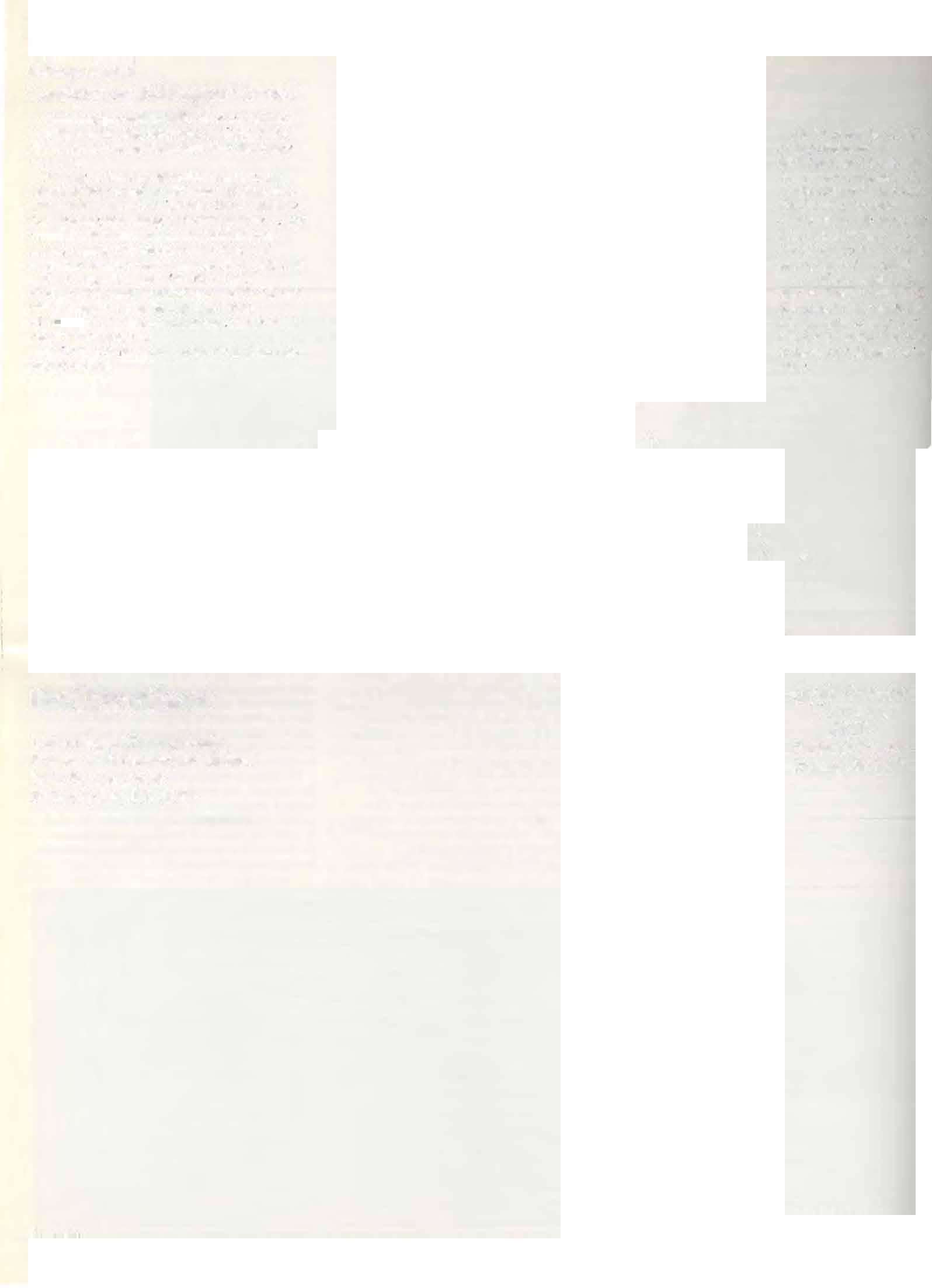
BROCJI LRE!
Bellwether
3800 Spruce Street
Dr. \1. Josephme Deuhler (V'38) celebrated her birthday Ma_1 4th after the hest in show judging at the Burh Counry Kennel Club. Dr. Deuhle1: dwsho11 chairmanfor tlli!! ewmt. hm built thi.\ shoh into one of the tup twenty in the nation (ow ofmore than 1000). In addition to giving lwr time ru Bud..s County A.C.. Dr. Deubler al.w> rhairs tht' \1omgomer_1 Coumy A.C. \how, held in October. nns is rhe II'Orltl:\· large!!t terner sho1t .
Address correction reques
University of Pennsylvania
School of Veterinary Medicine
0 0 0 • •
Philadelphia, PA 19104
() •
Organization US Postage PAID
Nonprofit
Philadelphia, PA Permit No 2147
t1






















 Leslie G. Herr. lireredpimt ofthe 1984 £1 sea l'ri�e in Para,\itulog_r anti Dr. Carl E. Ku·kparri('k (/e/1) and ft./J: Richard B. Sh(JI-e/,\{}n, EVSCO Plwrmaauticuls repre,·emari1·e.
Leslie G. Herr. lireredpimt ofthe 1984 £1 sea l'ri�e in Para,\itulog_r anti Dr. Carl E. Ku·kparri('k (/e/1) and ft./J: Richard B. Sh(JI-e/,\{}n, EVSCO Plwrmaauticuls repre,·emari1·e.












